Troy – Walking with Achilles, Ajax & Agamemnon
In the last post on this Adventures Abroad tour of western Turkey we left the city of Istanbul and traversed Turkish Thrace to the WWI battlefields of Gallipoli. It was a sobering experience viewing the places where over 100,000 young men lost their lives, not for King and Country, but for nothing. In this post we’ll leave European Turkey behind and cross the famed Dardanelles to Asia Minor where we will visit the remnants of another war, one whose legacy has lasted almost 3,000 years. Please join us as we visit the legendary city of Troy.
Crossing the Hellespont
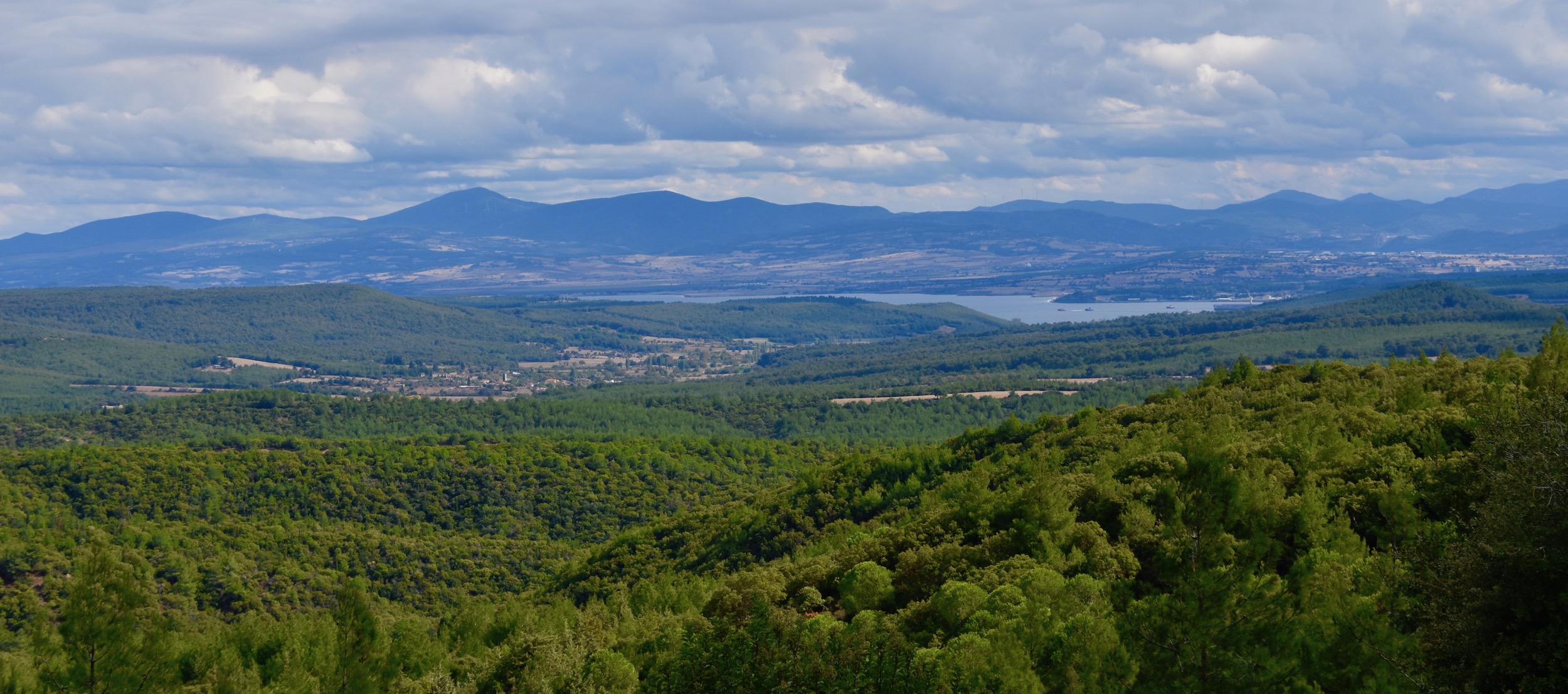
Leaving Gallipoli and heading for the ferry crossing to the city of Canakkale we get this view of the Dardenelles far, far below. As I discussed in the last post, the Dardanelles were in antiquity referred to as the Hellespont and proved to be a tough nut to crack for Xerxes as he took his Persian forces across to attack Greece. In a short while we will follow in Alexander the Great’s footsteps as we cross from Europe to Asia on our way to Troy which was the ancient city that guarded the entrance to the Hellespont.
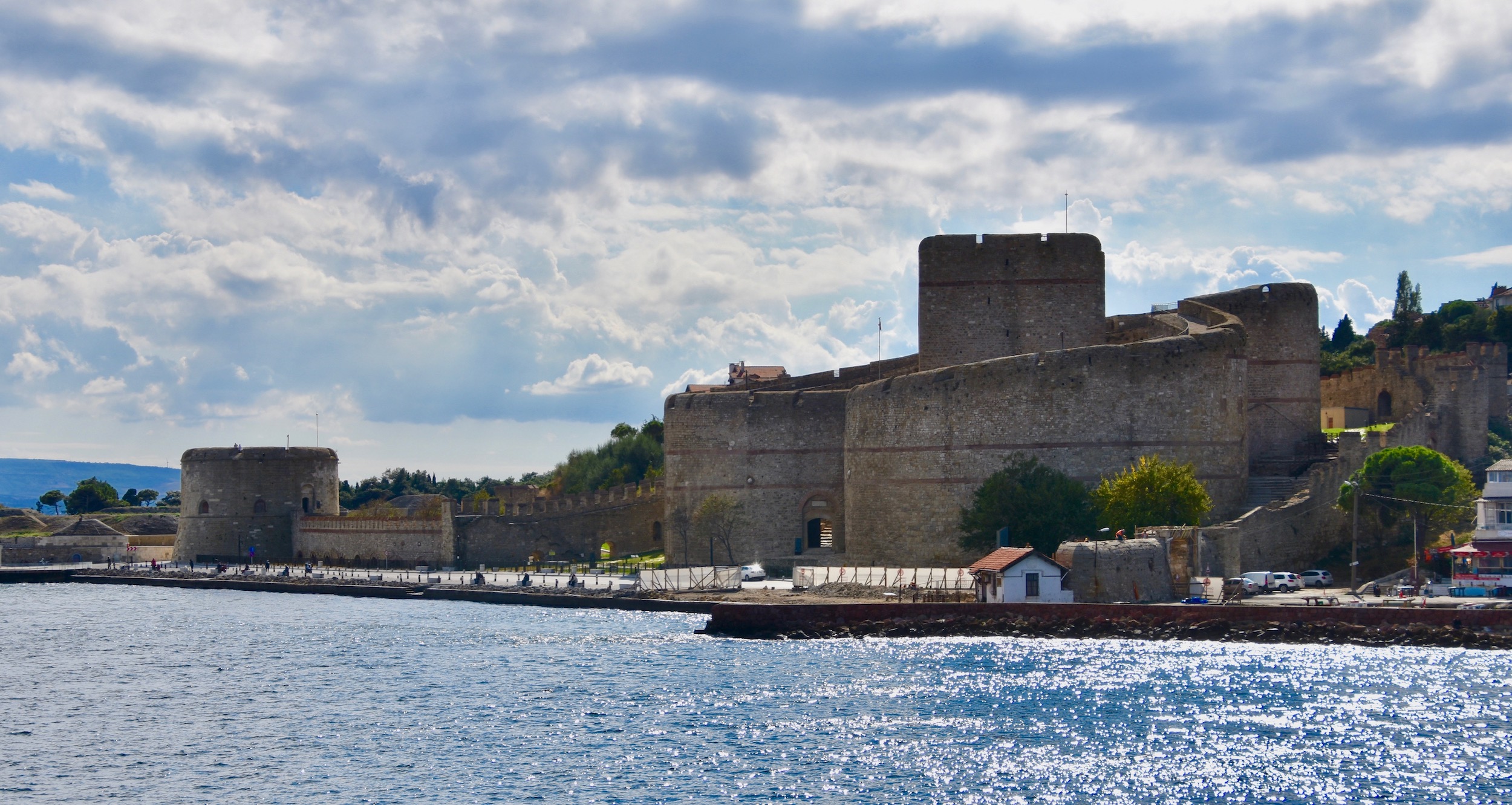
This is Kilitbahir Castle, one of two built by Sultan Mehmet II, the conqueror of Constantinople, at the narrowest point of the Dardanelles. Its name means ‘lock of the sea’ and indeed it was for many centuries. The ferry departs not too far from its walls.
Looking back you can see the Dur Yolcu monument which has this admonition in Turkish – “Traveller halt! The soil you tread once witnessed the end of an era.”
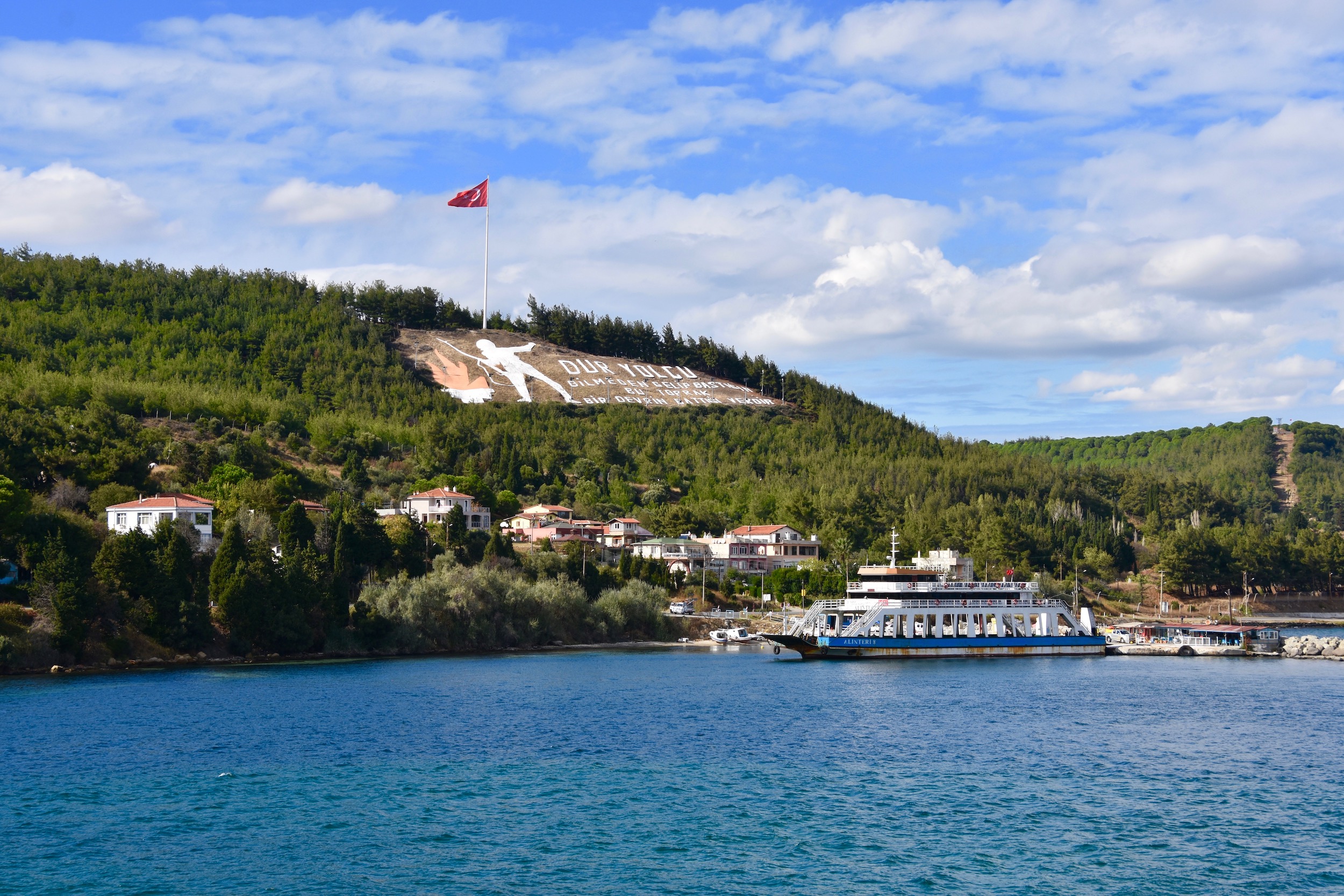
The Dardanelles is one of the busiest waterways on earth and that is evident as I wonder if our ferry captain is going to challenge this freighter for the right of way. Thankfully he doesn’t and we are soon on our way to Troy which is about a half-hour drive from Canakkale where we will return to spend the night.
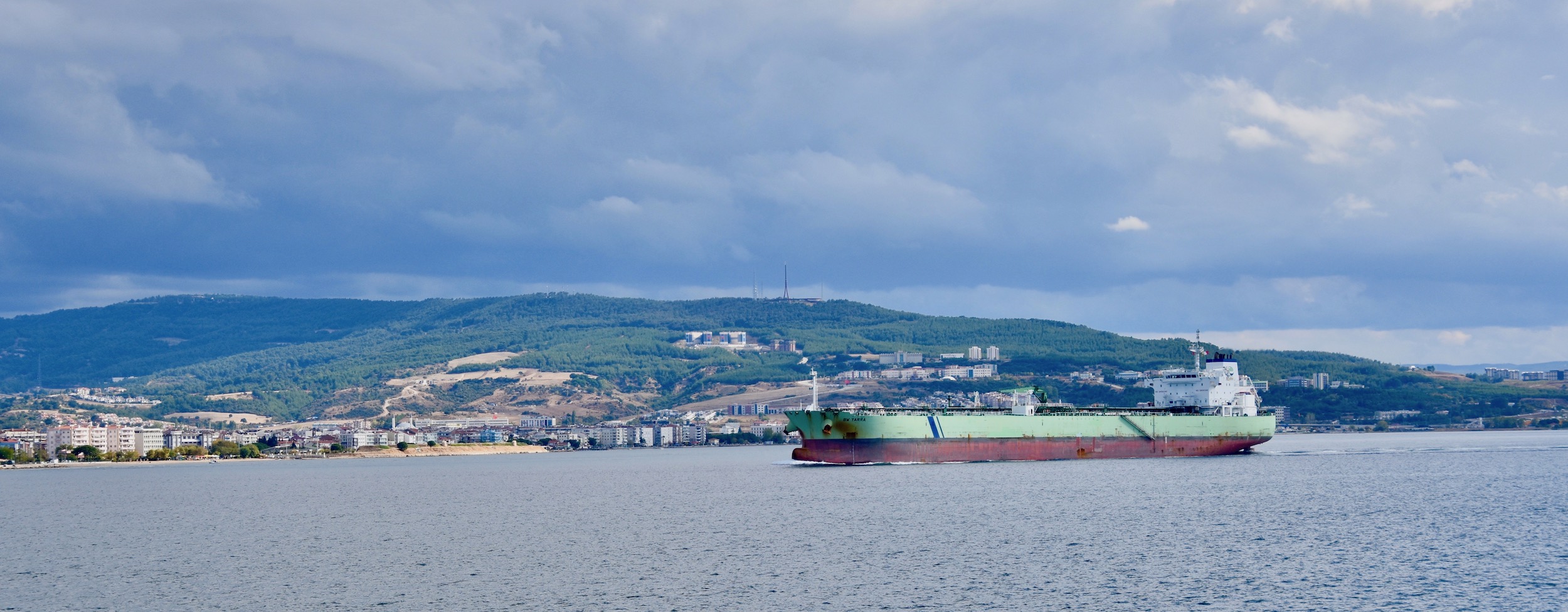
The Epic of Gilgamesh is by far the oldest piece of written literature in the world, but I would not consider it to be a work of so-called Western Literature. That honour goes to Homer’s two epic poems The Iliad and The Odyssey both of which are intimately linked to the story of the Trojan War. The Iliad tells the story of only a few weeks near the end of the ten year siege of Troy and ends with the funeral of the Trojan superman Hector, slain by Achilles. The Odyssey only briefly mentions the fall of Troy using the ruse of the Trojan horse. The full story of the Trojan horse is told in Virgil’s Aeneid which describes it from the Trojan point of view.
For the better part of 2,500 years the Trojan War was considered to be a myth by many, although I was never quite sure why. Since at least 3,500 BC there has been a city at the strategic entrance to the Dardanelles in an area known as the Troad or Troas, from whence the city gets its name, which incidentally has been identified as Hittite.
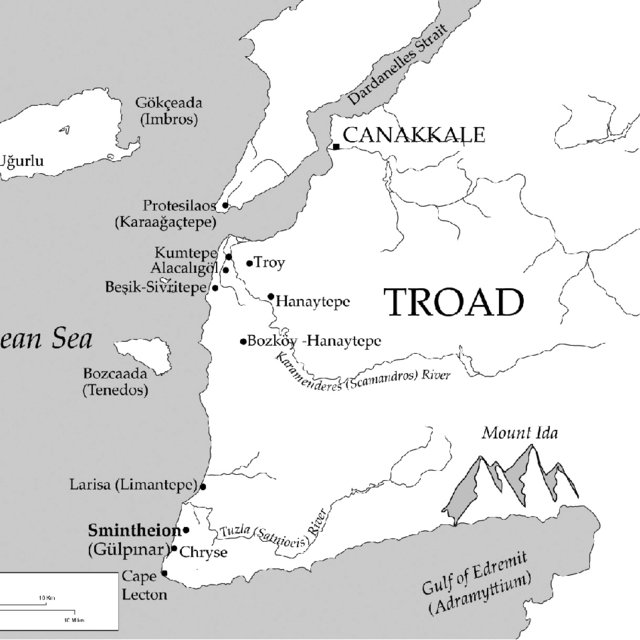
The war as described in The Iliad would have taken place in the late Bronze Age around 1100 BC, millennia after the first city on the site was established. The characters described by Homer on the Greek side are clearly associated with the Mycenaean culture of that time. People were coming to the Troad for literally a thousand years in the belief it was the site of the Trojan War. Just as I have titled this post, they wanted to tread the same ground as Achilles, Ajax, Agamemnon and so many other great heroes described in great epic poem. In 334 BC Alexander the Great laid a wreath at what had been known almost forever as the Tomb of Achilles. St. Paul visited the site during his many travels. But gradually, and this is a cliché I know, Troy became lost in the sands of time and people actually forgot where is was. It was only in the late 18th and 19th centuries that the revived interest in the classical world led to speculation not only about where Troy was located or if it ever existed at all.
Given the evidence, I really don’t think there should have been any doubt about the existence of Troy; it was more a question of finding it again and proving that the war Homer described actually took place. And so we turn to one of the most controversial figures in the history of archaeology, Heinrich Schliemann.
Archaeology was in its infancy in the 19th century and the methods used today to excavate ancient sites were not yet invented, nor was the discipline to go slowly and not destroy anything of value. The mantra then was essentially one of treasure seeking and no one did it or better (or worse) than self-proclaimed Homeric scholar Heinrich Schliemann. A self-made millionaire by somewhat dubious means, Schliemann was obsessed with finding the city of Troy and had the means to devote his life to finding it. However, it was British amateur archaeologist Frank Calvert who was the one who correctly identified the otherwise natural looking hillock in the Troad as the most likely place to look for the ruins of Troy. Lacking Schliemann’s resources, he suggested to him that he look there rather than the wrong place that Schliemann was then excavating. Schliemann did and using such primitive tools as dynamite discovered not one lost city, but nine, one on top of each other.
At one of the lowest levels Schliemann found and clandestinely removed what he claimed to be King Priam’s treasure and paraded his Greek wife around festooned with what he called the Jewels of Helen. This is a photo of Sophia Schliemann wearing these looted treasures.

The Turkish government was none too happy about this flagrant theft and long story short, Schliemann had to give back much of what he stole and irony of ironies, the Russians stole what was left from the ruins of Berlins in 1945. Those artifacts now reside in the Pushkin Museum in Moscow.
The one good thing Schliemann did was to bring professional archaeologists to Troy and they have been busy there ever since. It is now known that the level at which he found Priam’s Treasure was at least a thousand years older than the presumed dates for the Trojan War. The level that coincides with the proper dates is either VI or VII and not level II where the treasure was found.
With that brief background let’s make our way to the site of the nine cities of Troy.
This is an aerial view that shows that the ancient city was not actually that large. It was around this that Achilles chased Hector three times before the latter turned to face him and was slain.
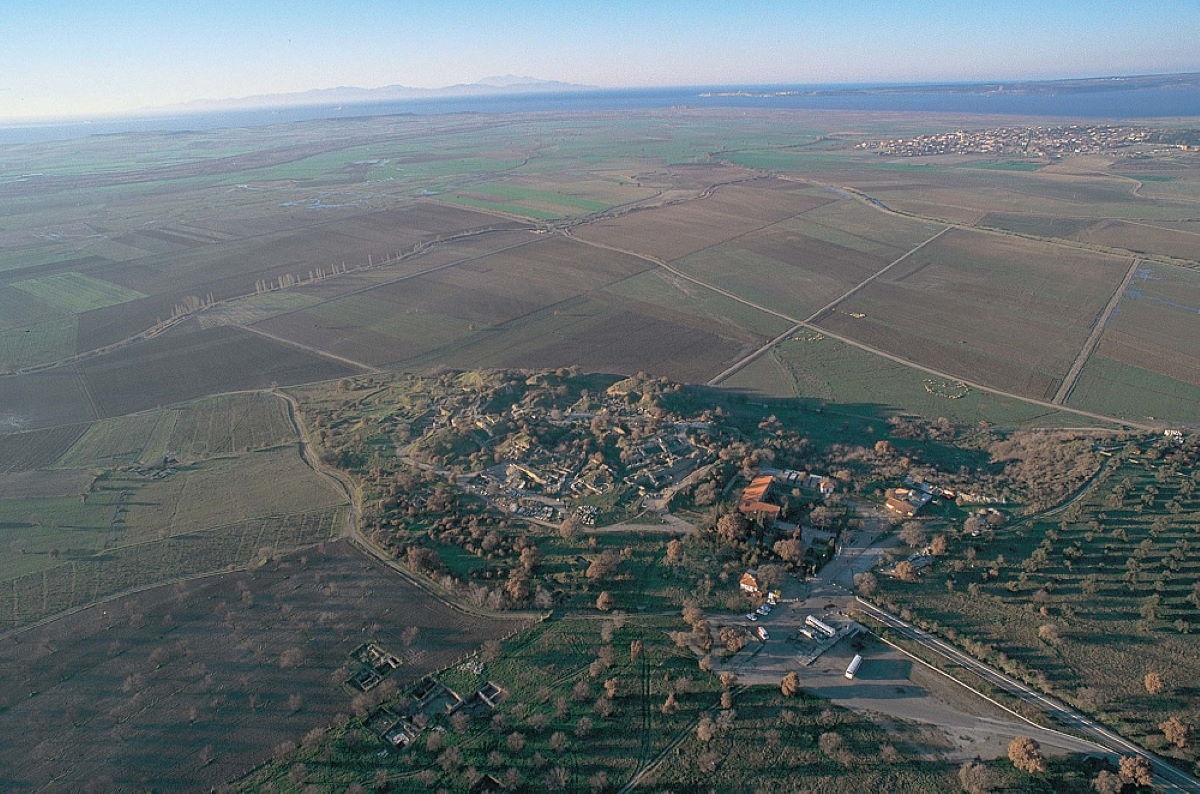
Visiting Troy Today
In 1998 Troy was designated as a UNESCO World Heritage Site, the second we have visited on this trip. The first was the Sultanhamet district of Istanbul. Just like the Sultanhamet, the number of tourists today at Troy is a trickle compared to my first visit here about a decade ago.
The first one notices might very well be the most interesting – the Trojan Horse. This quite possibly realistic replica was erected in 1975. Whether it is because of Covid or the state of the structure it is now cordoned off so this is as close as you can get now.
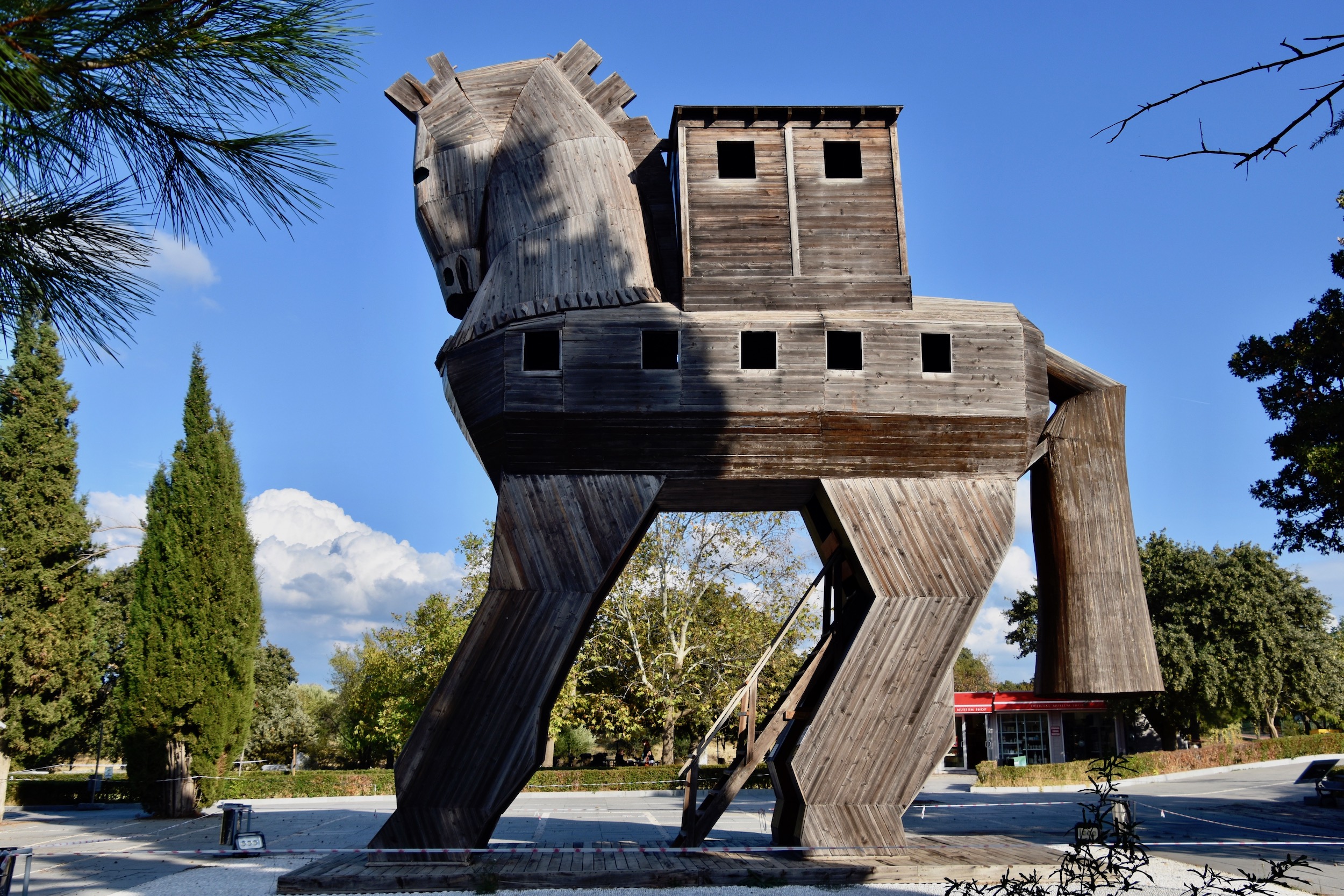
On my first visit you were allowed to go inside the horse. This is a picture of me and fellow Hellenophile Rob Purdy taken back then.
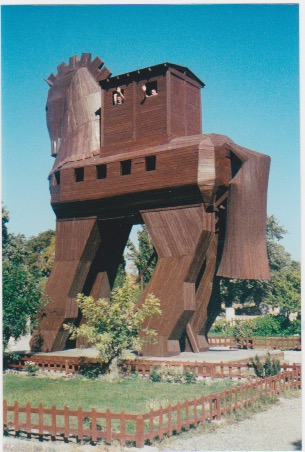
This is our Adventures Abroad guide Yasemin Reis explaining the various layers of Troy. Often on these AA trips local guides are hired to lead the visit to sites like this, but Yasemin’s exceptional knowledge of every site we visited made this superfluous.
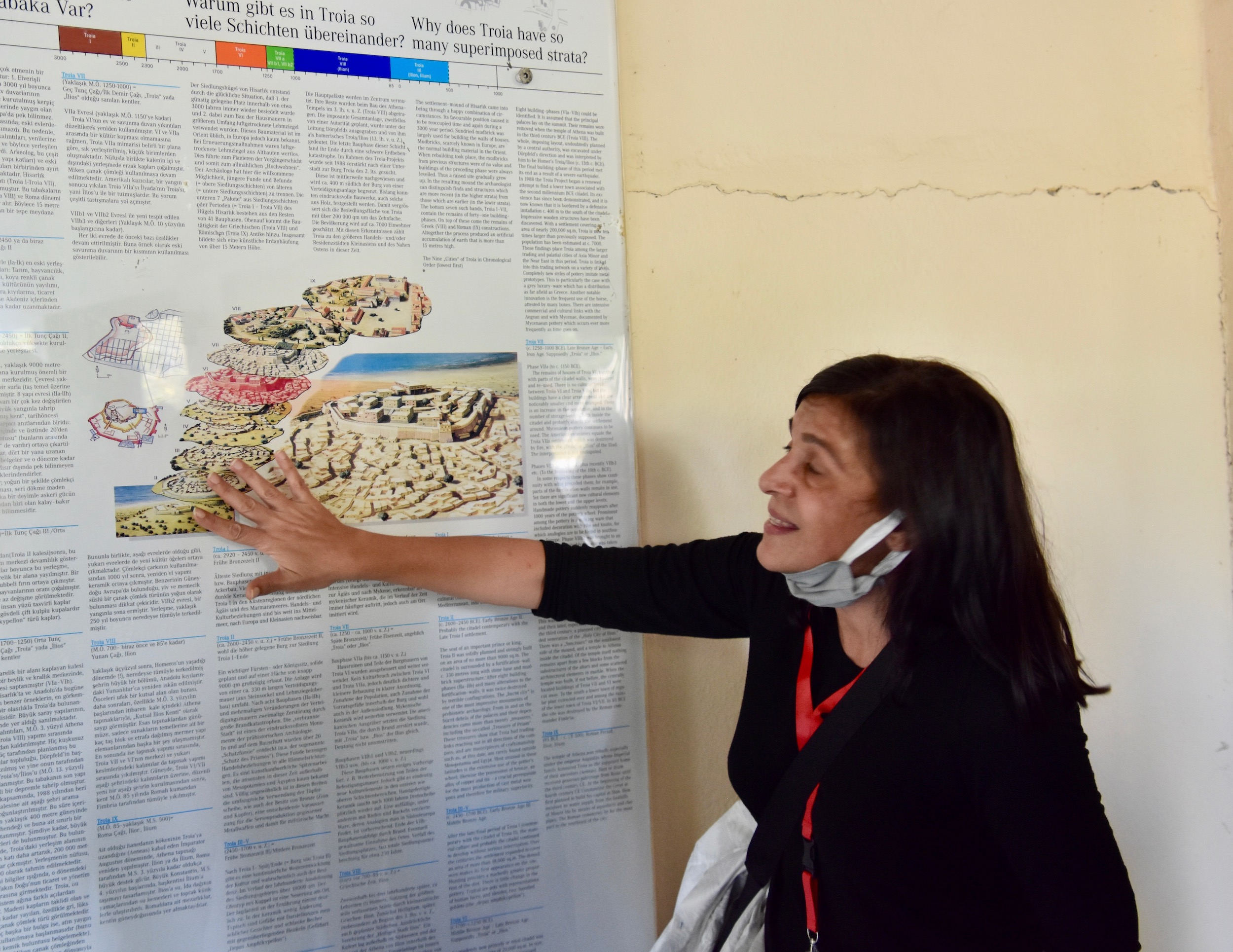
Now it’s time for a spoiler alert – you will almost certainly be disappointed with the visit to the actual site of Troy. There are a number of reasons for this, but I attribute it mostly to the fact that it would simply be impossible for a place with the reputation Troy has to live up to expectations. Secondly, Schliemann did a lot of damage in his initial excavations that cannot be undone. Thirdly, as archaeological sites go it is nowhere nearly as interesting as most of the others we will visit on this trip. The very fact that it is one layer on top of another mitigates against a unified presentation that is reasonably understandable. So with this disclaimer in mind let’s follow Yasemin the short distance to ruins.
Although I don’t believe it is mandatory to follow, there is a pretty good one way path that wends its way through the various layers. What follows are the highlights of our trip through Troy.
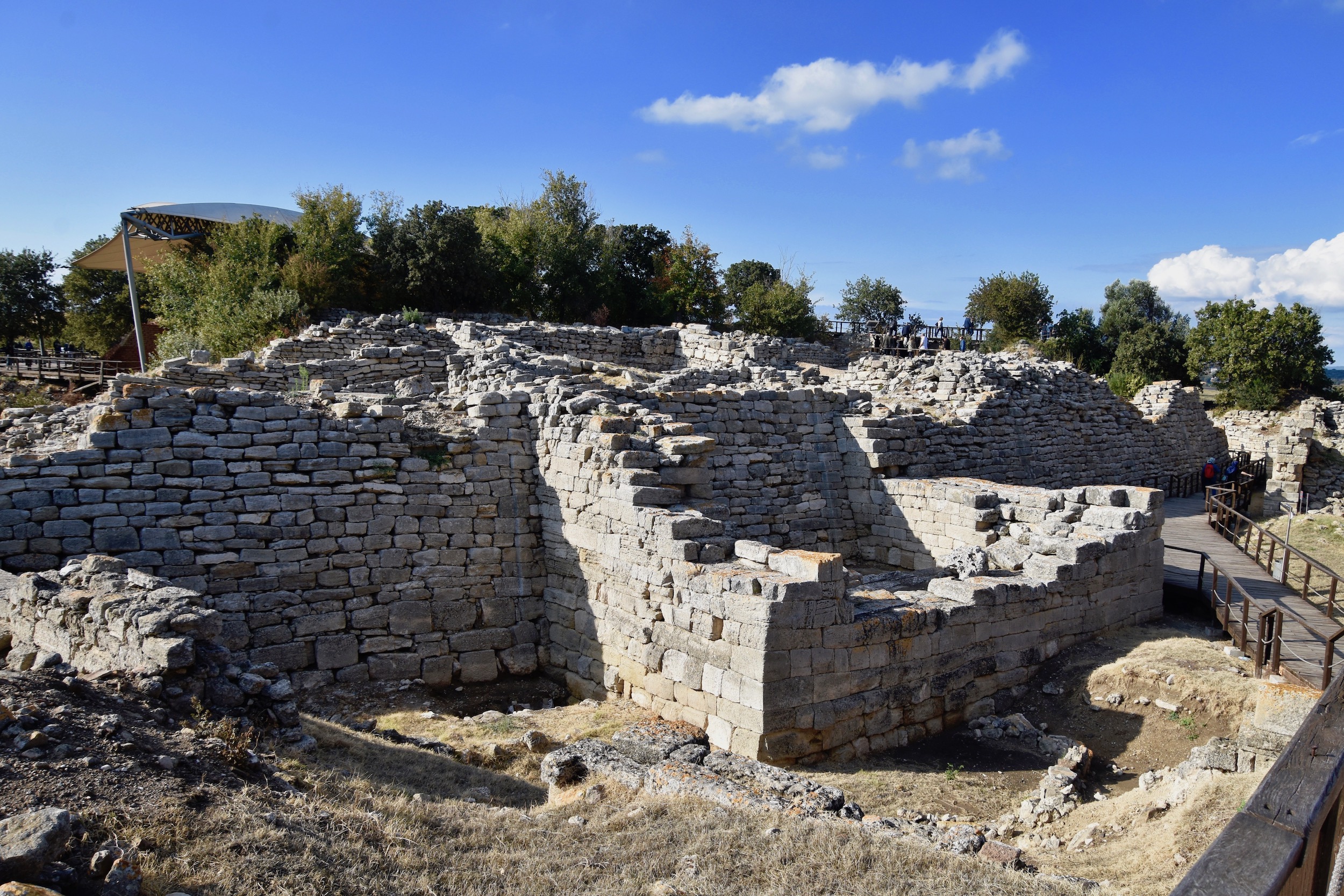
This is the east wall of Troy VI which is the first place you encounter as you enter from the pathway on the right. You can see from the schematic below just how confusing and unusual an archaeological site this really is.
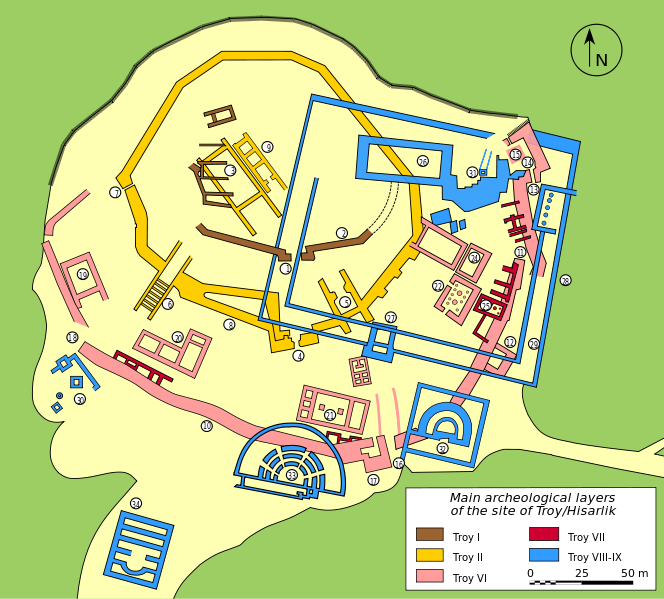
Troy VI lasted from about 1750 to 1000 BC and would coincide with the approximate time of the Trojan War. Somehow these rather small walls don’t bring to mind the mighty ones of The Iliad that frustrated the best efforts of Achilles, Ajax, Agamemnon, Ulysses, Menelaus and the other Greek heroes.
The walkway takes you around the site in a counter clockwise direction taking us next to the ruins of a Temple of Athena that was built over 1,500 years after Priam’s Troy at a time when the city was called Ilion. If you know your Trojan War history you will know that Athena sided with the Greeks during the war and brought many misfortunes upon the Trojans, so I was somewhat surprised to see a temple dedicated to her at Troy.
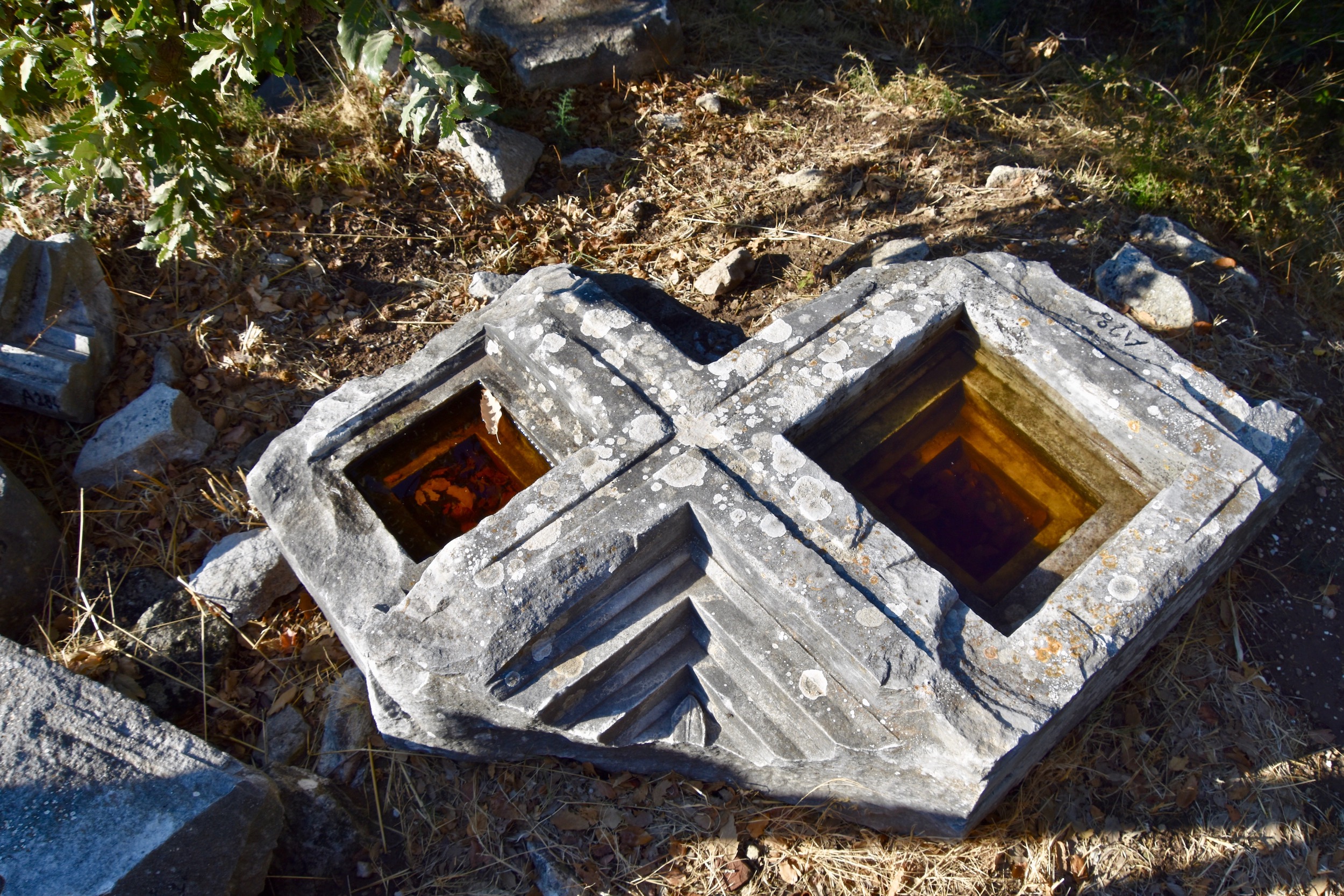
Apparently even before Schliemann arrived locals were pilfering marble from the remains of the temple for building materials and all that remains are a few bits of columns.
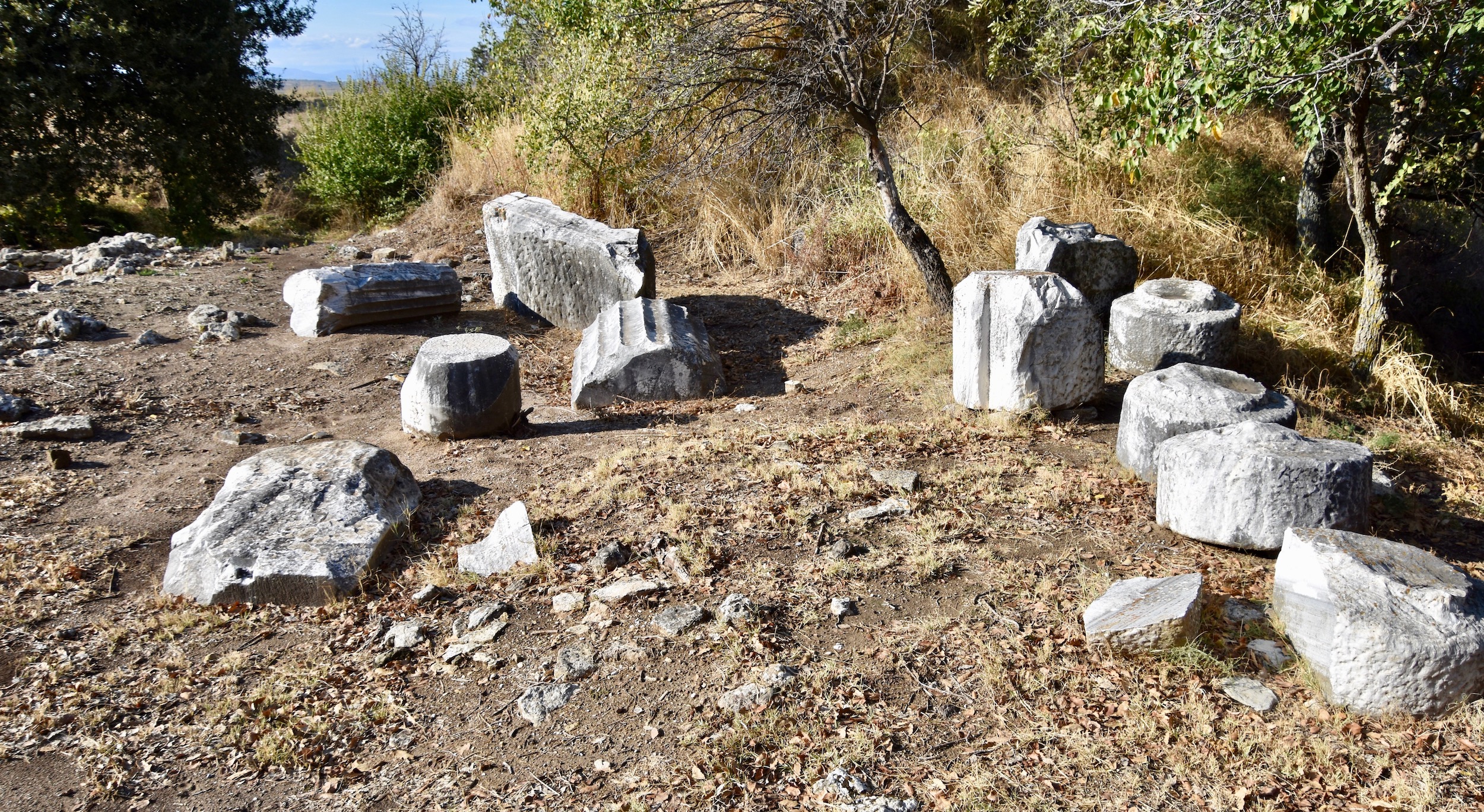
Next we arrive at the remains of the walls of Troy II and III which Schliemann mistakenly thought were the Troy of Priam’s time, but are actually over 1,000 years too old to be Homer’s Troy. Note that the walls of this Troy were topped with rather crude mud bricks.
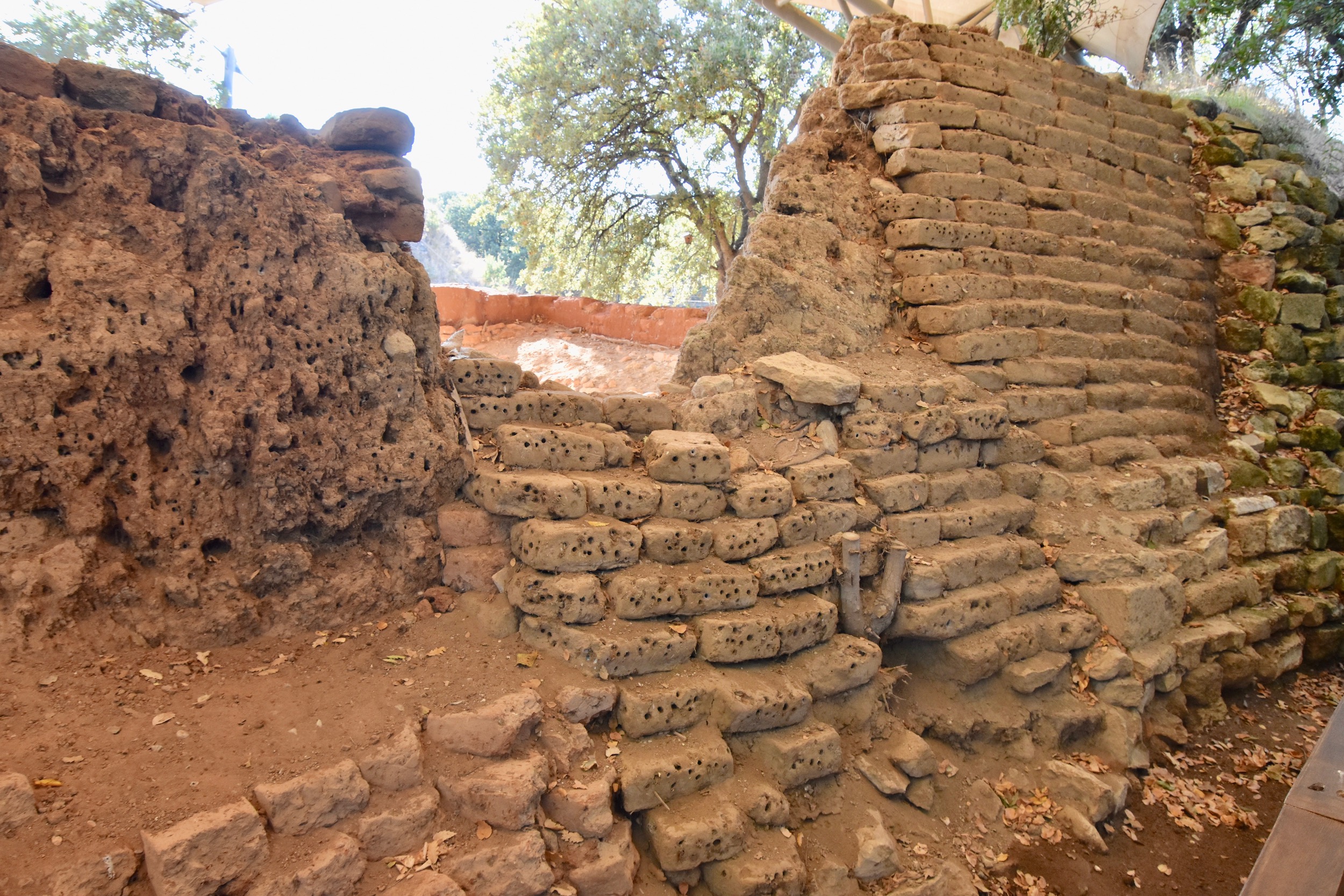
This is the megaron of Troy II which is a fancy archaeological word for a great hall or throne room. Doesn’t look so great after over 4,500 years, but not many places do in that time span.
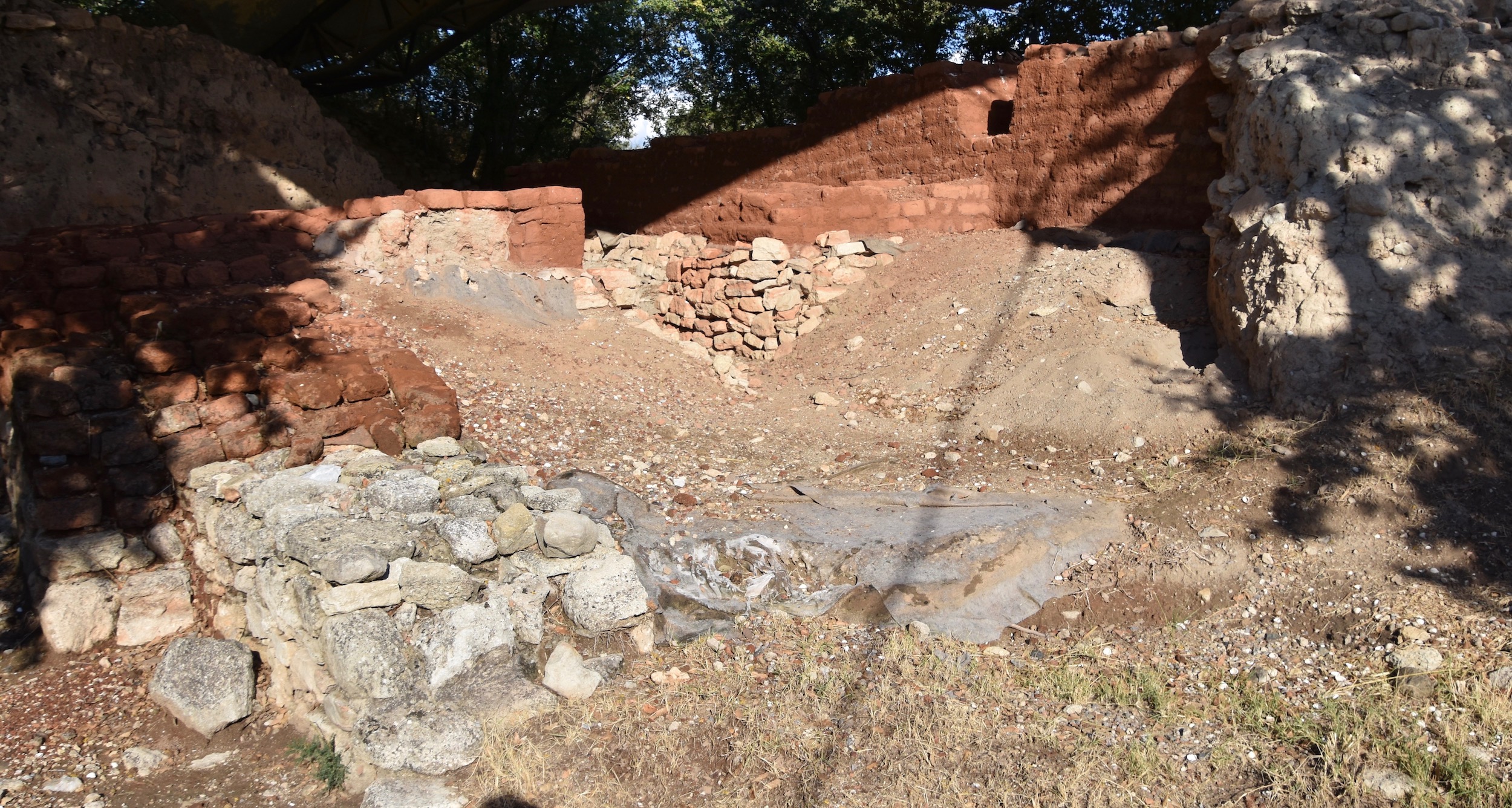
These are the remains of the very first Troy dating all the way back to 3,000 BC when the settlement was actually on the shore of a shallow bay on the Aegean Sea. Comparing these walls to those of Troy VI which we saw as we entered the site you can appreciate just how much more advanced the later walls had become. Also if you refer back to the schematic you can see how much smaller the original city was than that of Priam’s time.
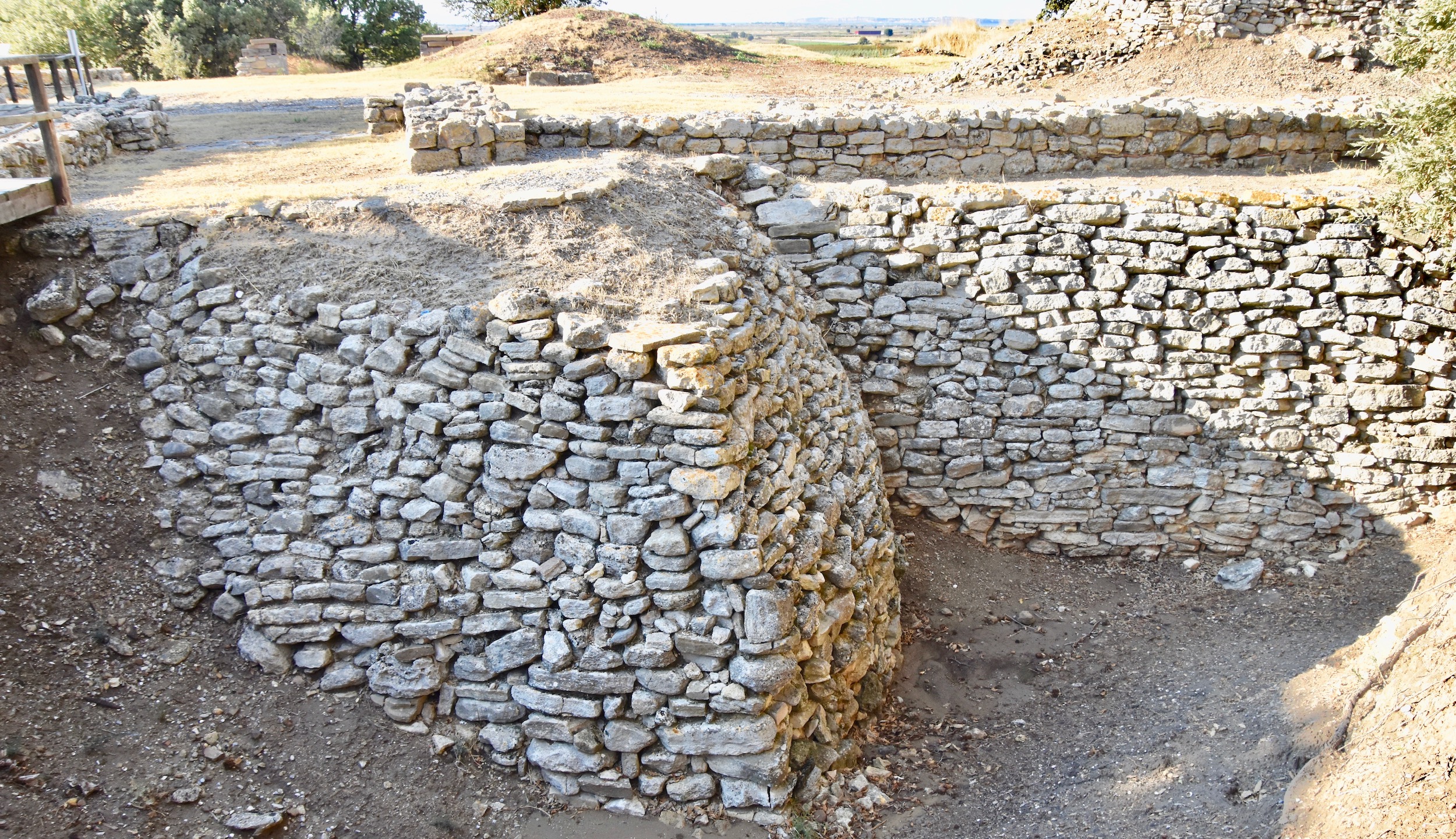
Next we come to one of the greatest examples of archaeological vandalism on record. This is the trench that Schliemann created using dynamite to blast his way down to Troy II, virtually obliterating all traces of Troy III to V.
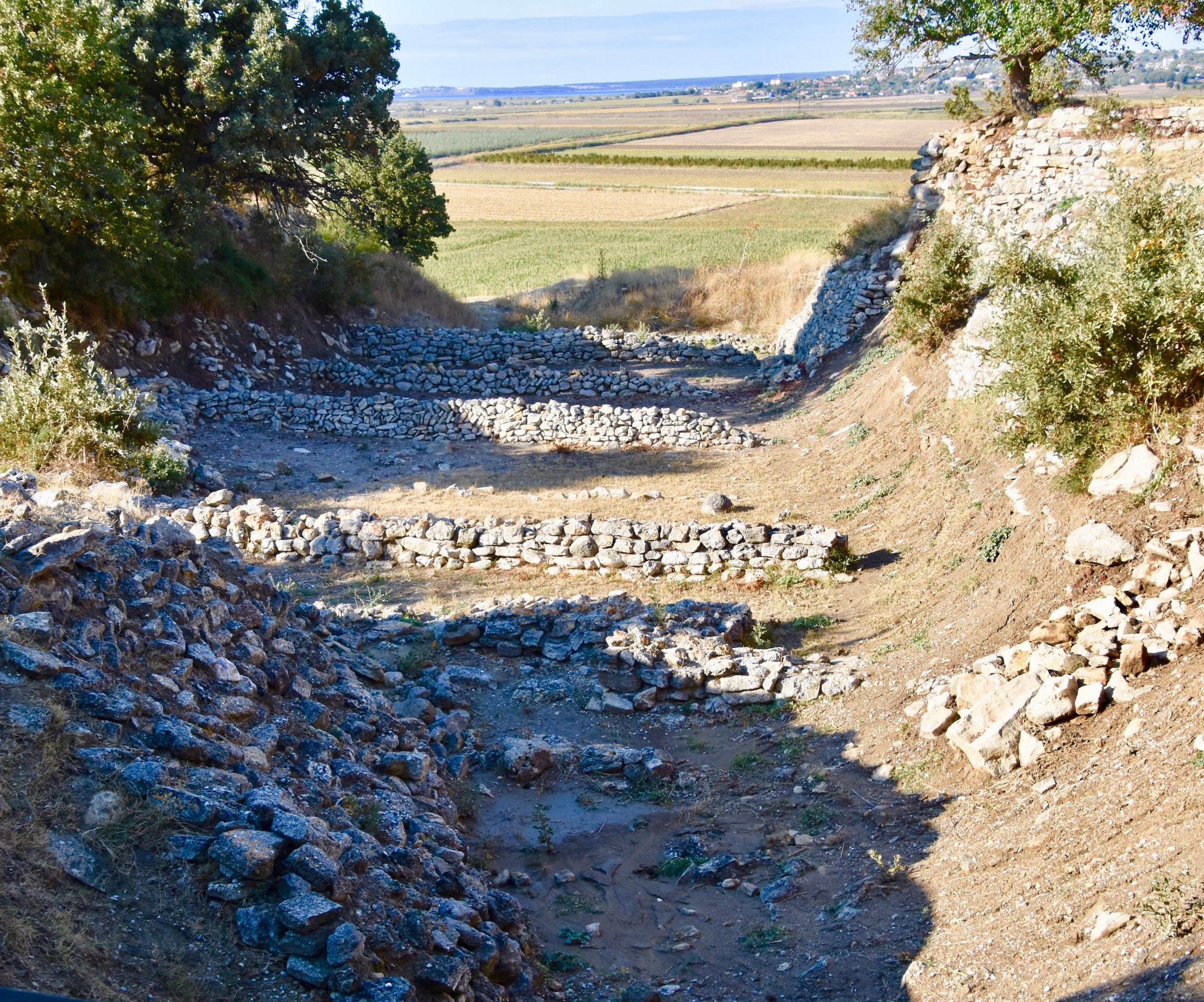
The only upside to Schliemann’s technique was the creation of the only place in Troy that you can get a view of the various layers of Troy from II all the way to the Roman city of Troy IX.
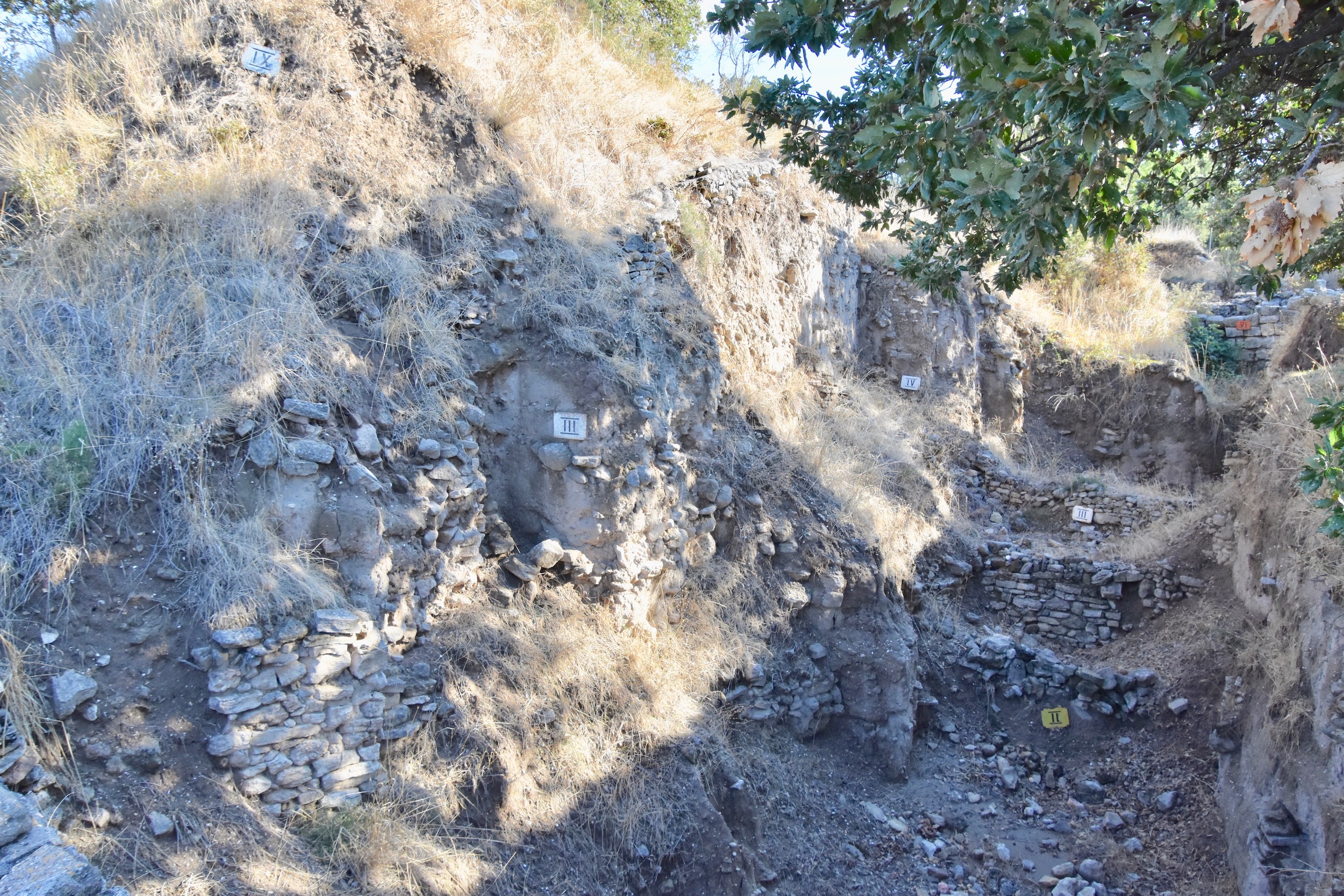
Next the walkway takes us to one of the more interesting places in Troy, the southwest gate to Troy II which Schliemann thought had to be the grand entrance to Priam’s palace. It was inside these walls that he discovered the ‘Jewels of Helen’ and the other treasures that he secreted out of the country.
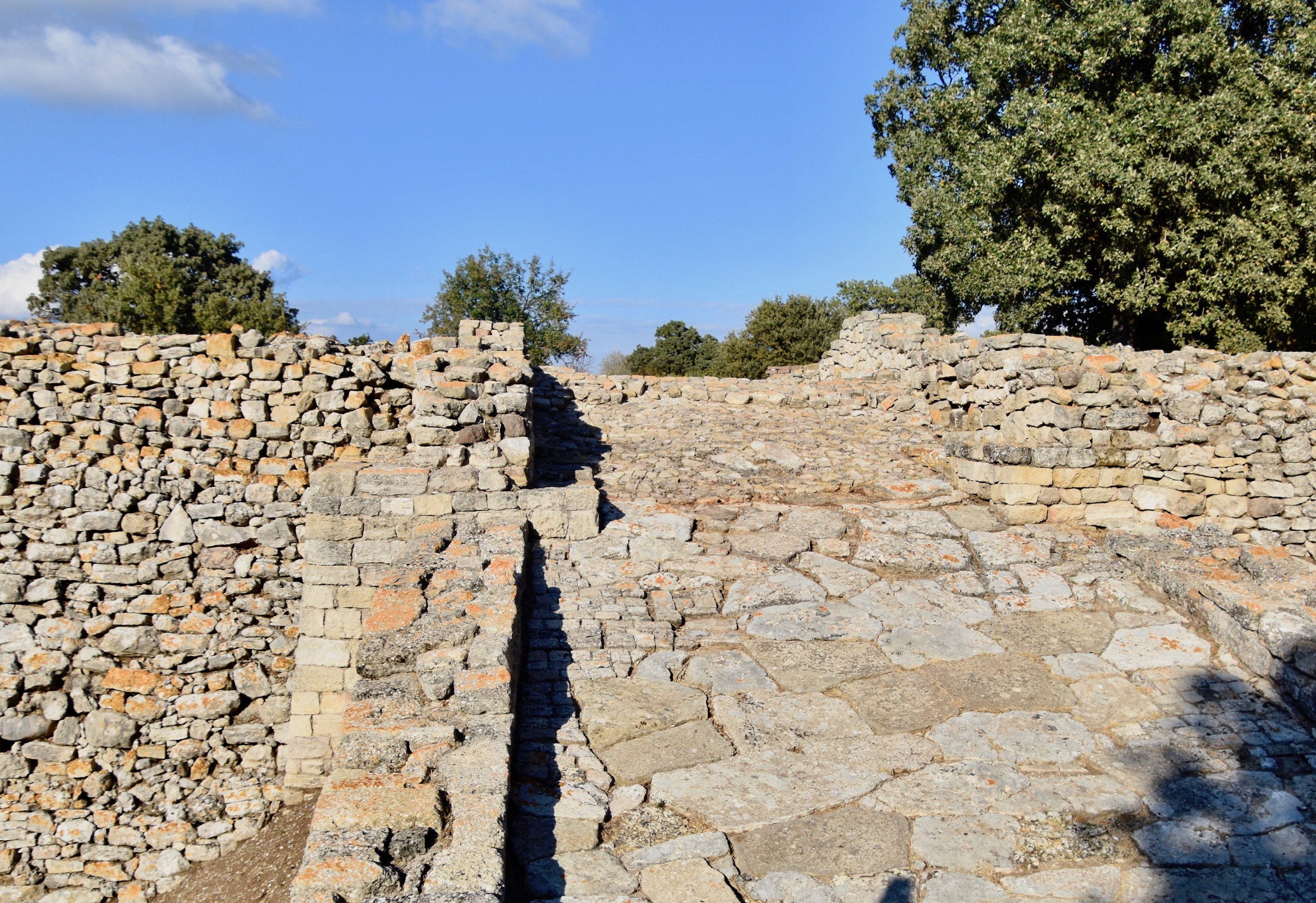
Next we come back to Troy VI and these walls that are thought to be those of the citadel of the city.
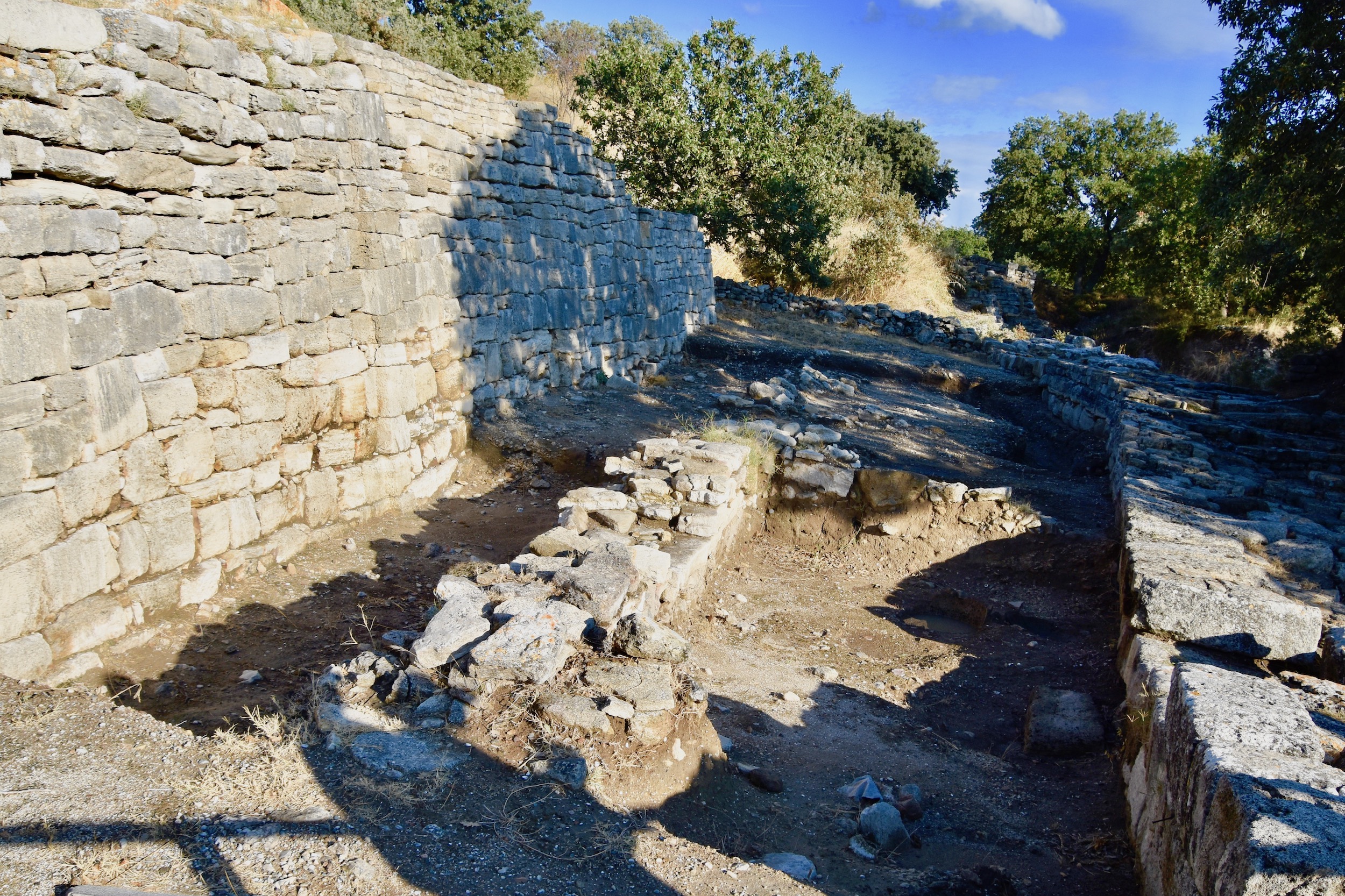
And if there really was a Priam’s Palace then this is it. If previously we were consorting with Achilles, Ajax and Agamemnon, now we are in the presence of not only Priam, but Paris and his absconding bride Helen, his magnificent brother Hector and his sister Cassandra who had the gift of foreseeing the future only to have no one believe her. Now we are starting to get the feel of this place.

Here is a photo of the AA group on the walkway around Troy. We have the place virtually to ourselves.
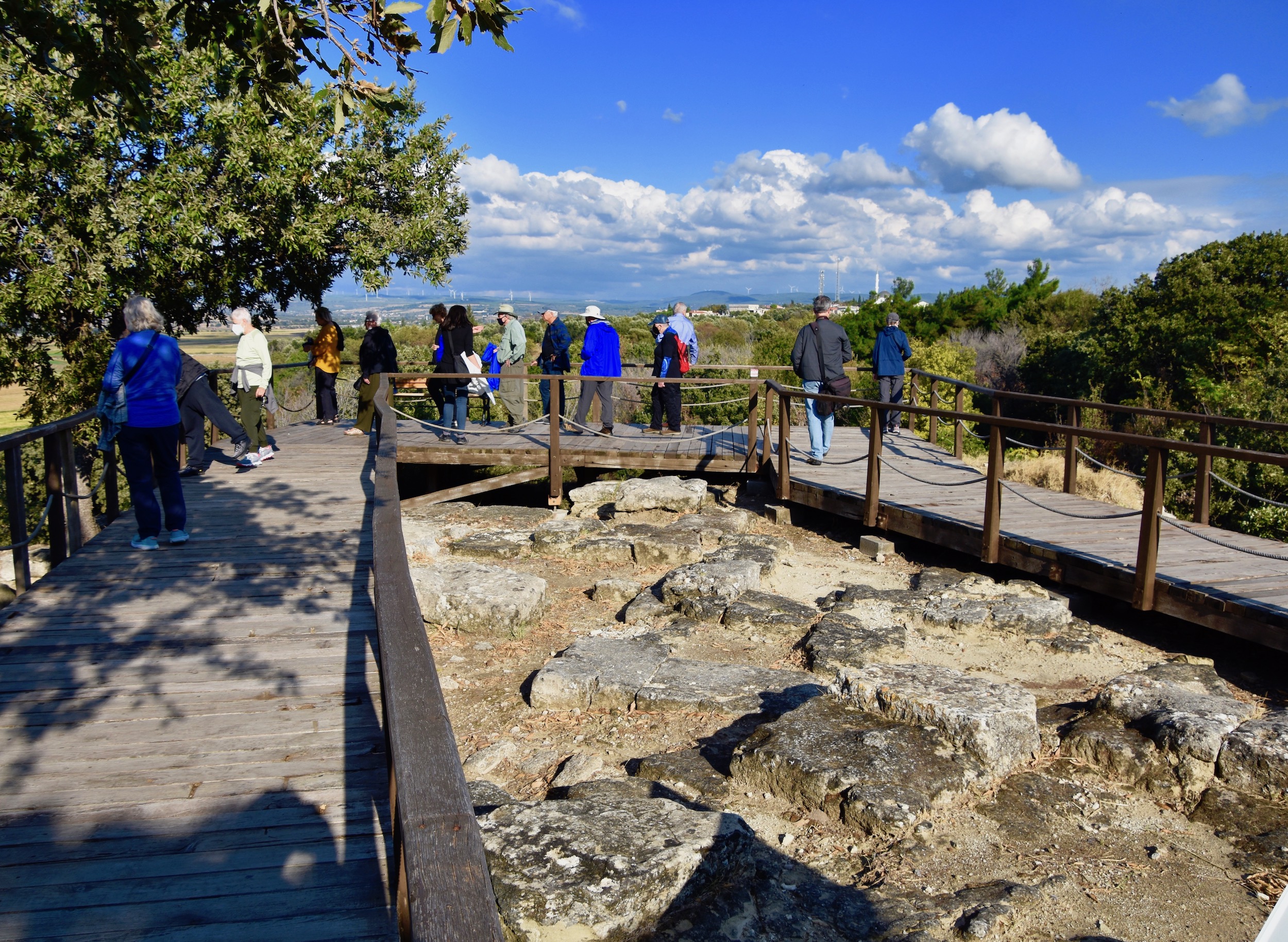
I mentioned that Troy I was actually on the shores of the Aegean. From this vantage point you can see just how far the shoreline has retreated over the ages
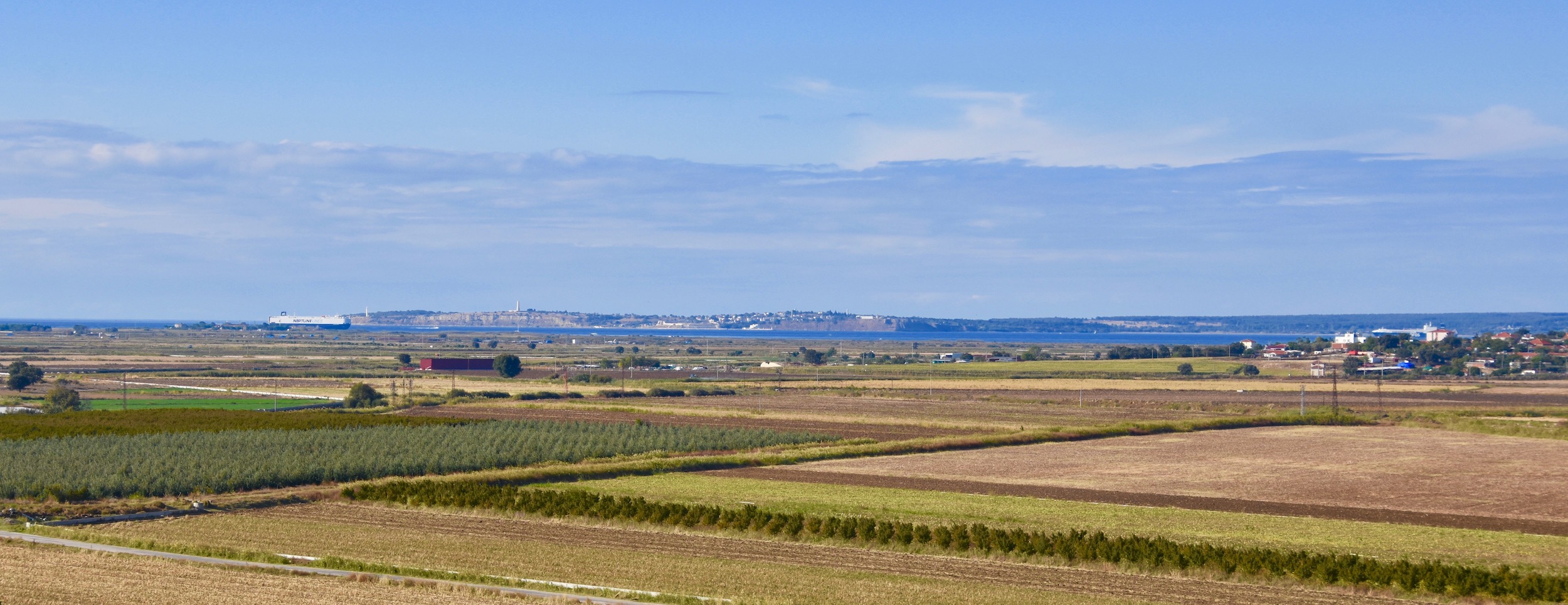
Troy VIII was a Hellenistic city that featured a sanctuary of Athena whose remains can still be seen today. It was here that Xerxes on his way to Greece sacrificed 1,000 cattle which apparently did not satisfy Athena who was not about to let a Persian destroy the city that bore her name. It must have been one bloody place on that day.
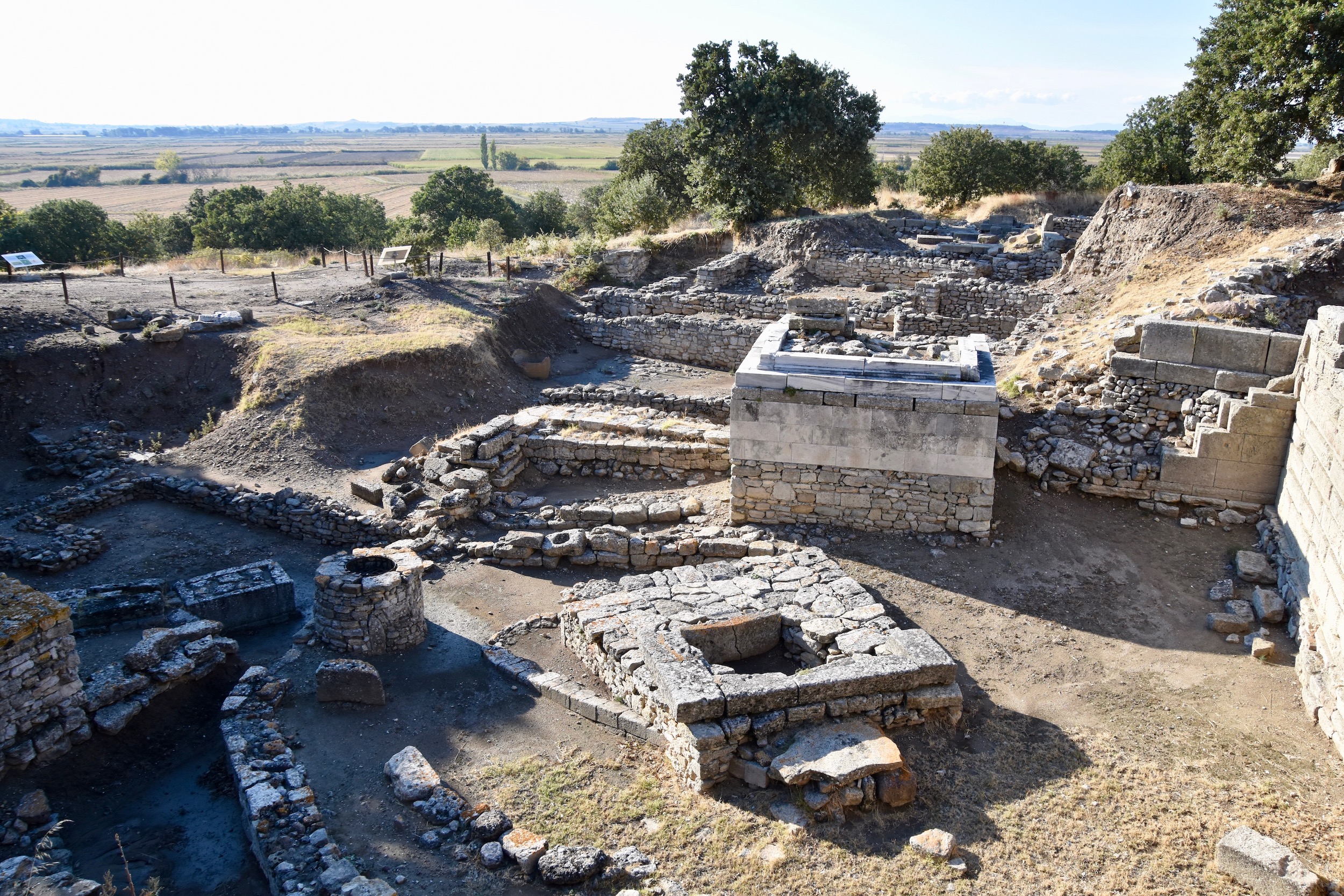
The last Trojan city you come across on this visit is the Roman one, now called Ilium and once visited by Emperor Augustus who paid for a number of improvements including the Odeon which is probably the best preserved site at Troy.

You complete your tour of Troy by exiting though what is believed to be the main gate into Troy VI, but I have to ask myself “If this was the main gate to Priam’s Palace, how the hell did they get that horse inside?”
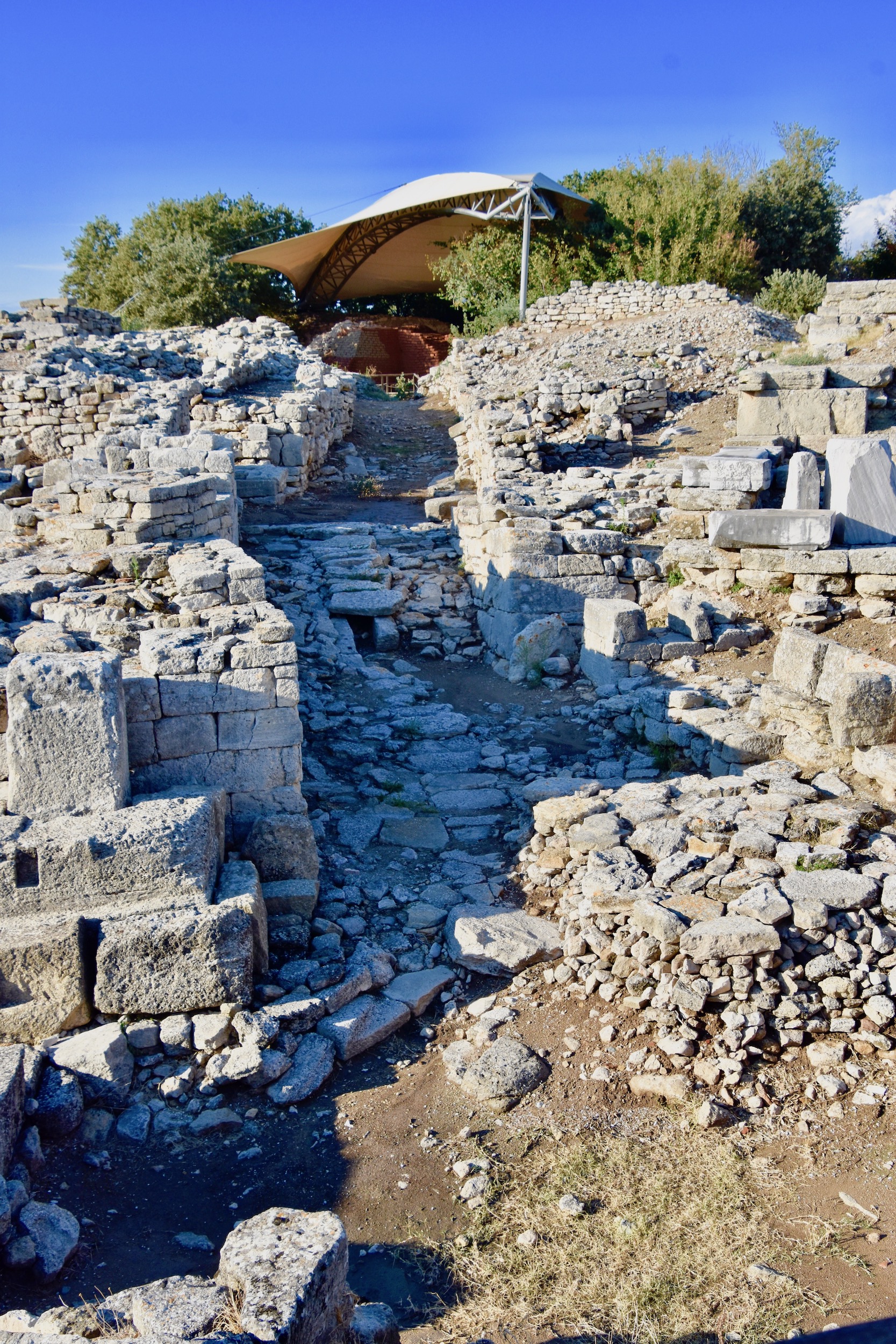
While that completes our visit to the site of Troy it is not the end of the visit. Since I was here last they have built a new museum to house a number of artifacts and we are headed there next.
The Troy Museum
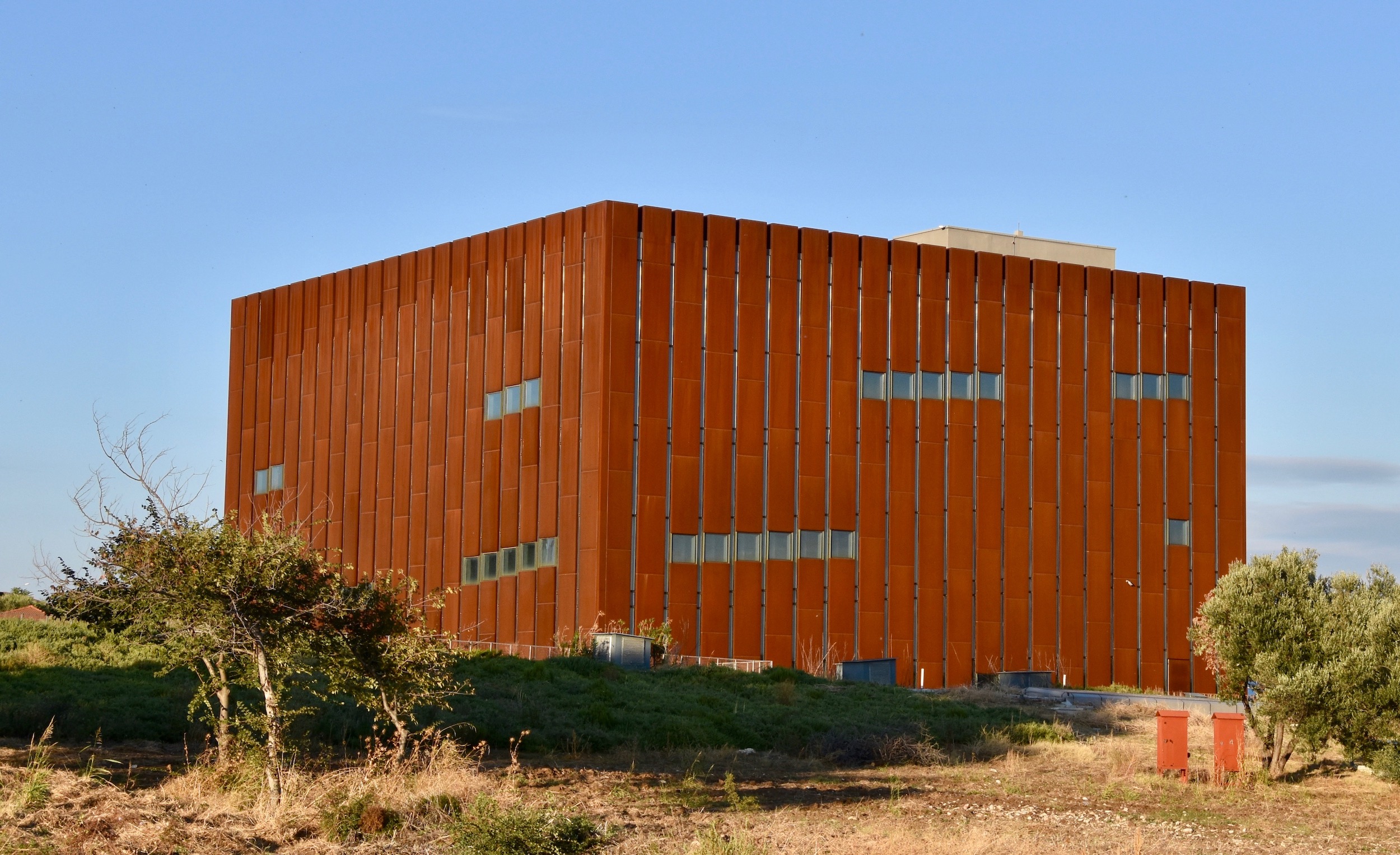
The Troy Museum opened in 2018 and has four floors dedicated to the history of all the cities of Troy starting with the earliest and ending with the Ottoman period. I can’t say I am a big fan of the design of the exterior which looks to me a rusting cube, but who am I to judge? Apparently people in the know consider it an award winning design.
The interior is super spacious to the point of being spare.
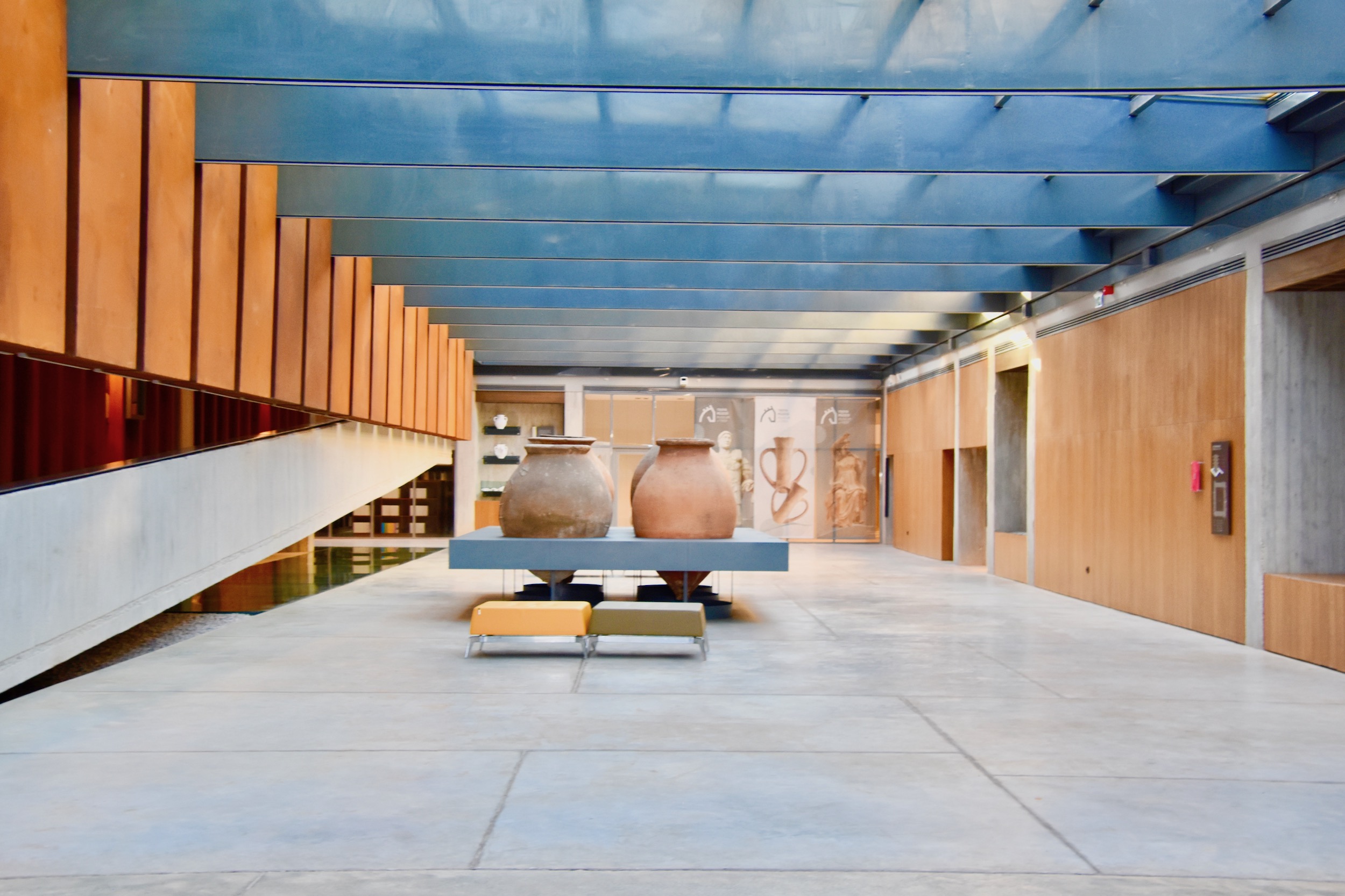
There is plenty of room to display the many artifacts, models and contemporary displays.
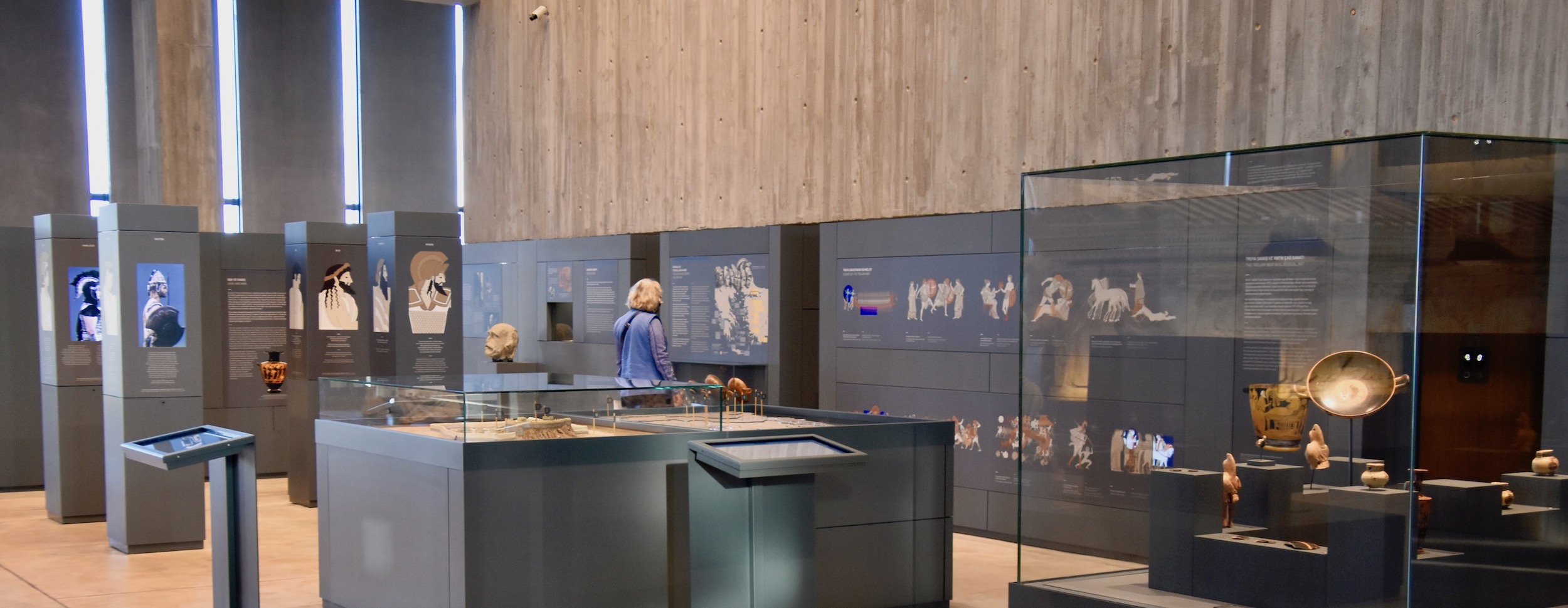
By contemporary displays I mean things like this painting of Troy II/III which was considerably smaller than the Troy VI of the Trojan War, but still a pretty formidable fortification atop a hill by the sea.
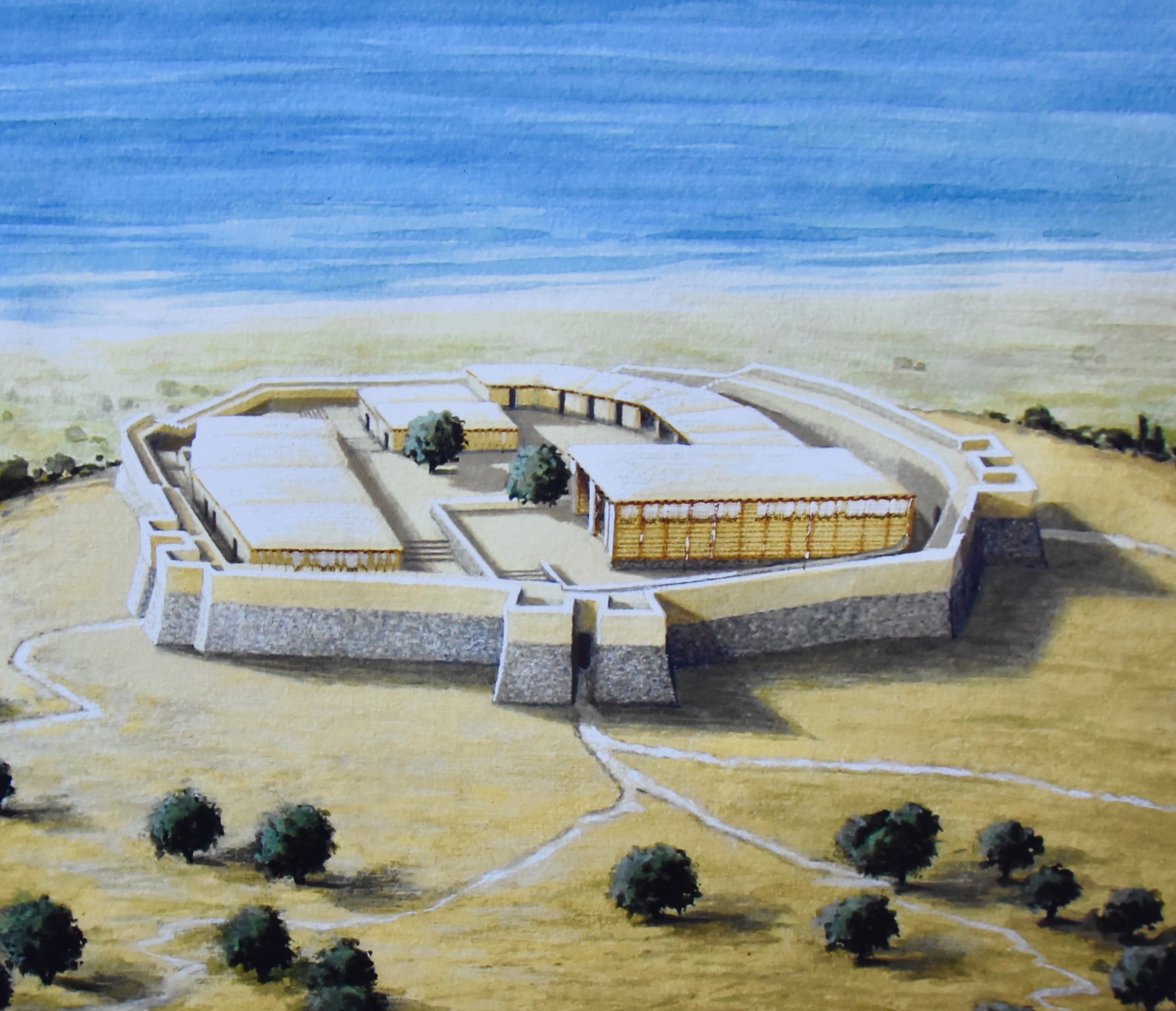
For me the most interesting artifacts were from the later periods including this terra cotta Cnidian Aphrodite from the 2nd century B. It is based on the famous statue by Praxiteles that once made the city of Knidos on the Datça Peninsula in Caria world famous. It was considered the first truly great representation of the nude female figure and was the basis for literally thousands of other statues of Aphrodite including the Venus de Milo in the Louvre.
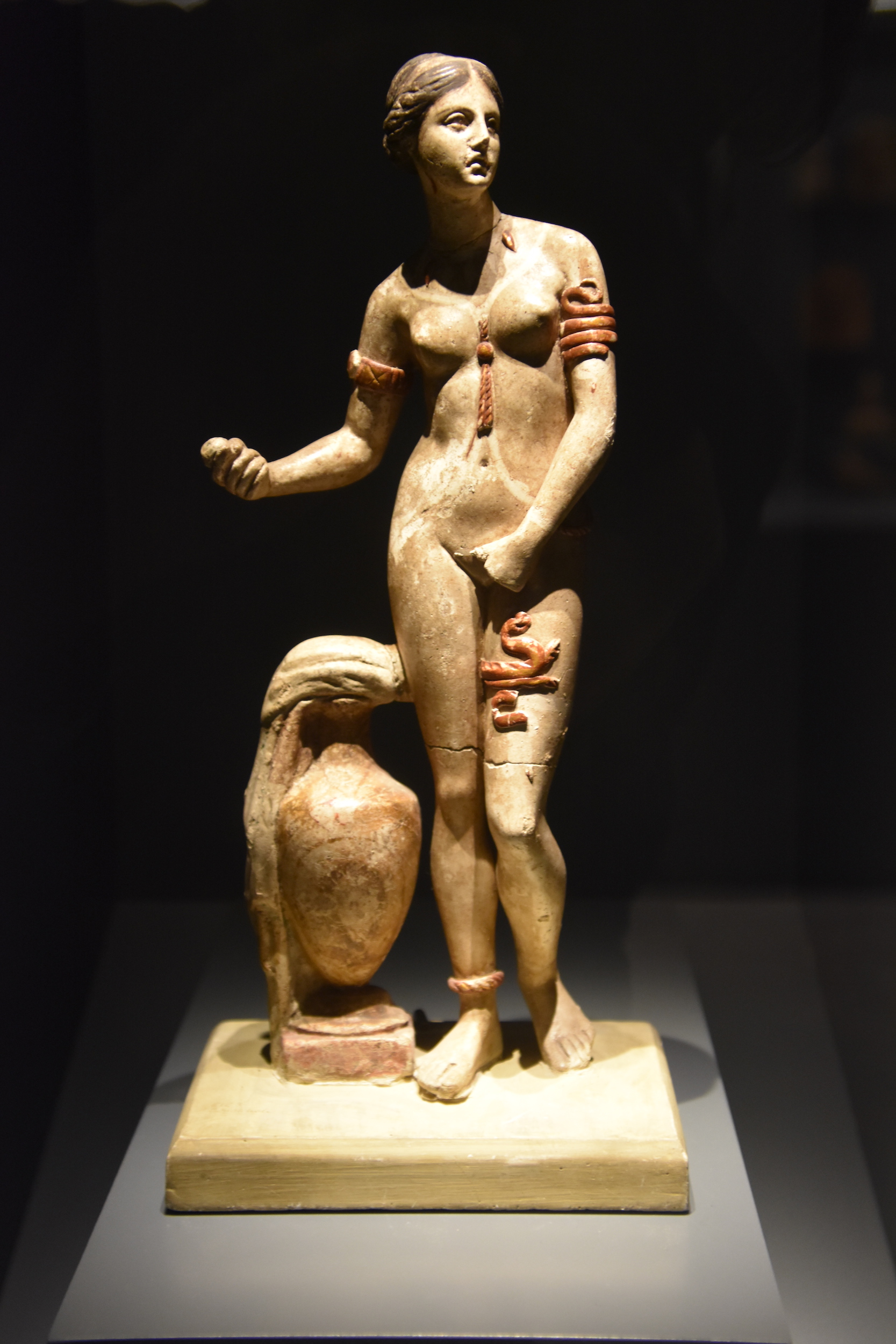
From a much later era is this larger than life statue of Emperor Hadrian that was excavated from the Odeon. We will be seeing a lot more of Hadrian on this trip, but this is our first encounter with one of the greatest of Roman emperors.
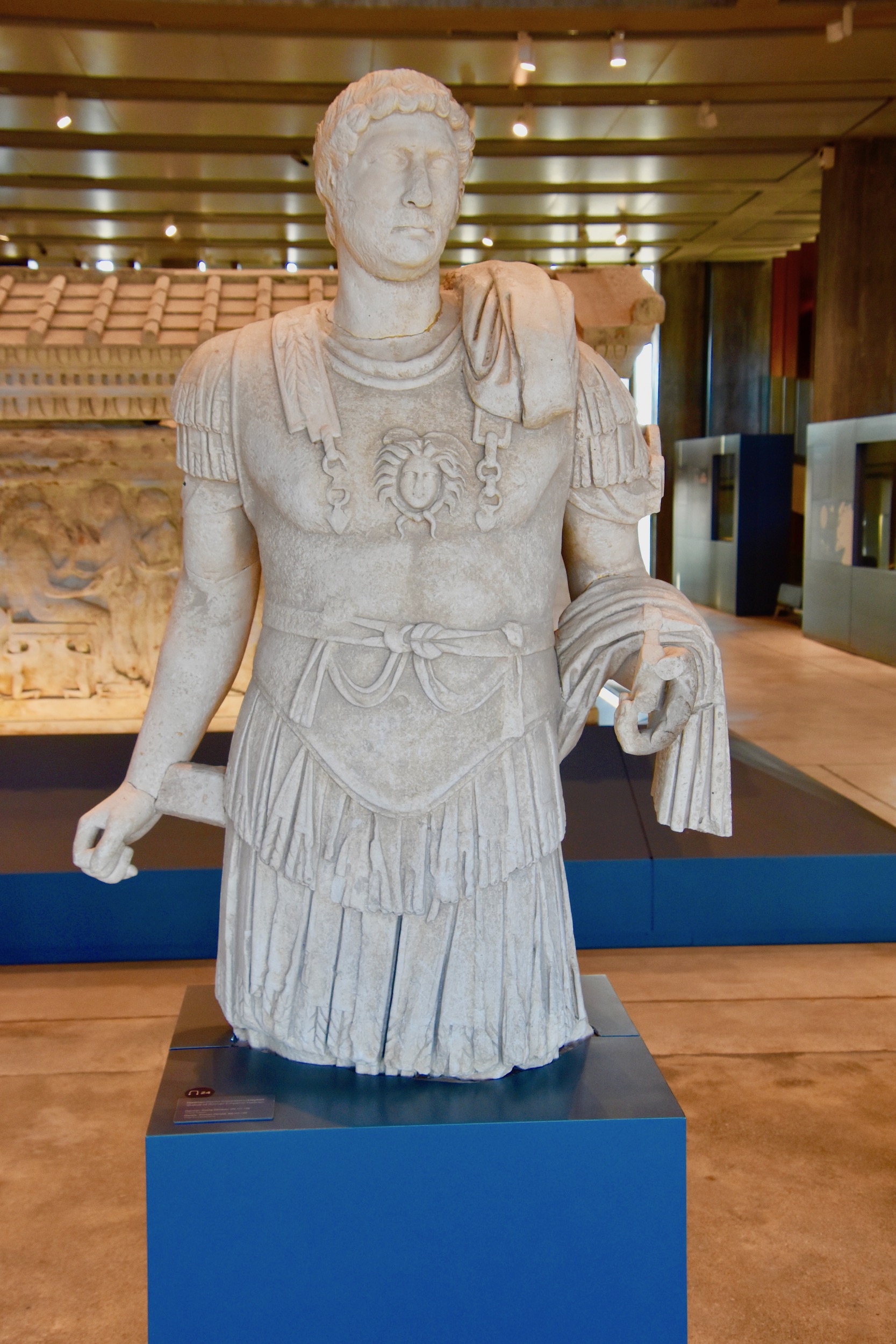
It was near the end of a long day which is perhaps why I was not as blown away by the Troy Museum as maybe I should have been. Looking at the museum’s website there is more than enough to keep one occupied for hours.
The last place I visited during this trip to Troy was among the most interesting. This is Homer’s Walk and it leads from the museum to the ancient site. It has a beautiful location in an olive grove and is lined with columns and the occasional bust. I stumbled upon it by accident when I was trying to get a good photo of the museum exterior. I was the only one here and with the quiet and the lengthening shadows I felt closer to the mythical heroes here than anywhere else that day. I only wished I’d had the time to walk its entirety. Maybe next time.

We didn’t get into our hotel in Canakkale until after dark, but with the wonders we had seen today it was more than worth it. In the next post we’ll continue our Adventures Abroad journey with a visit to Pergamon, one of the most famous cities in the ancient world. Please join us and I’ll tell you why it was famous.

